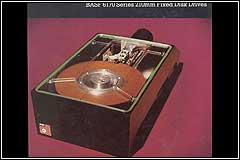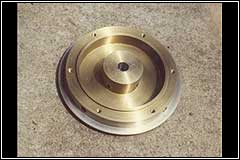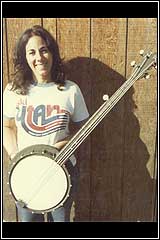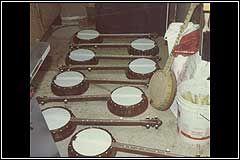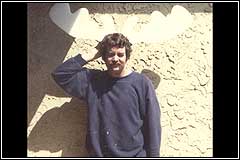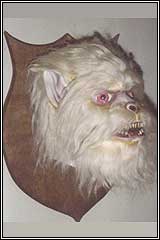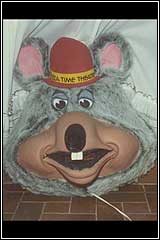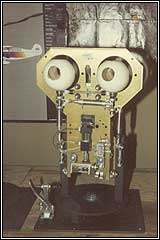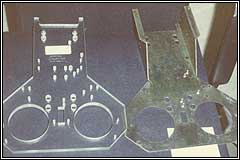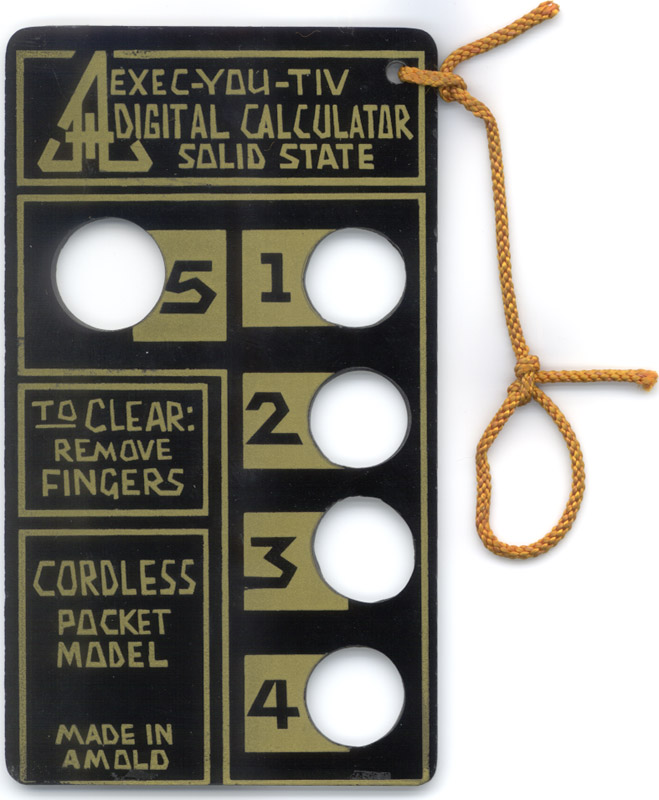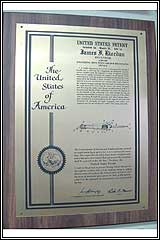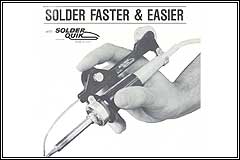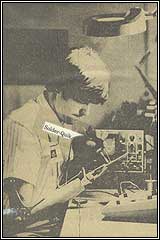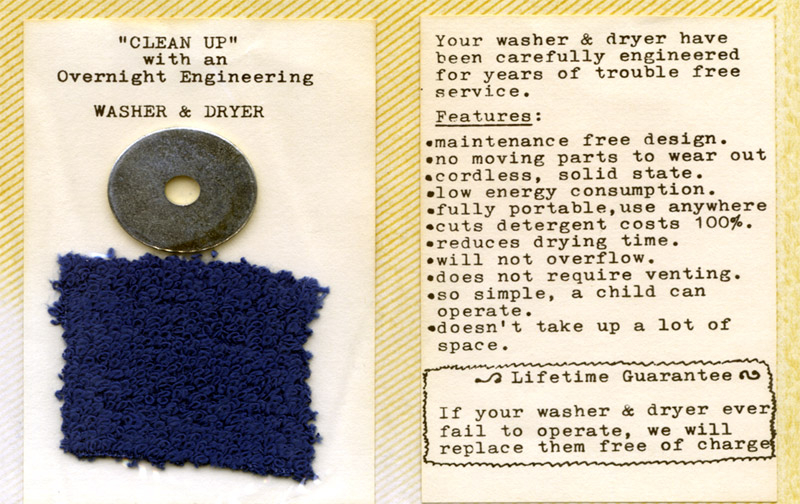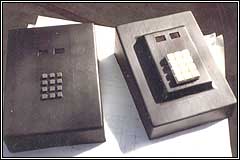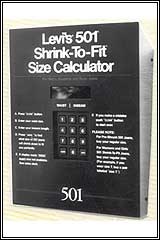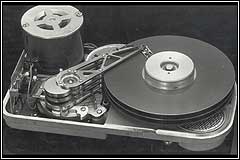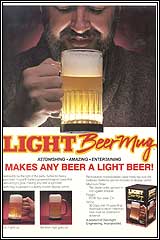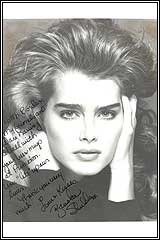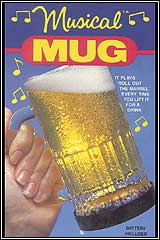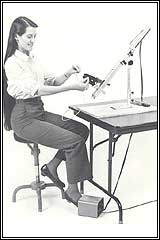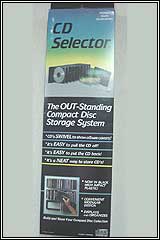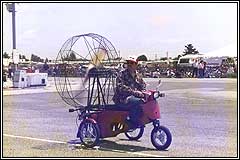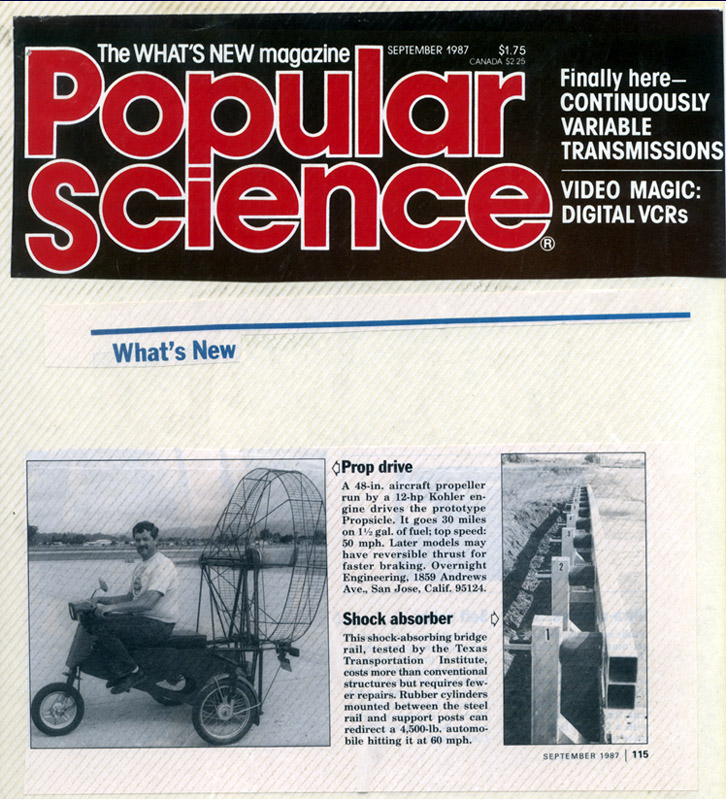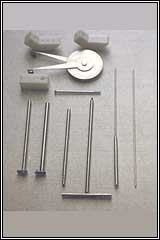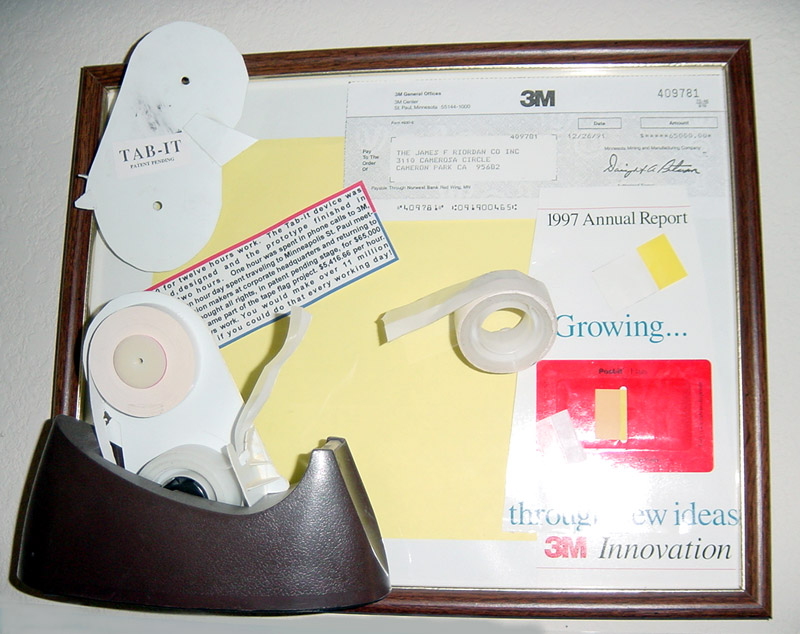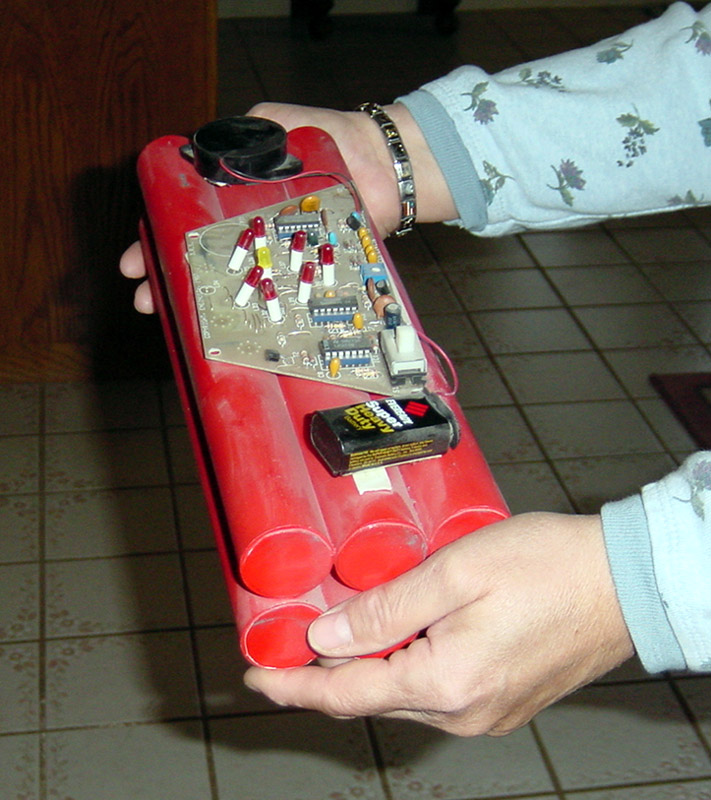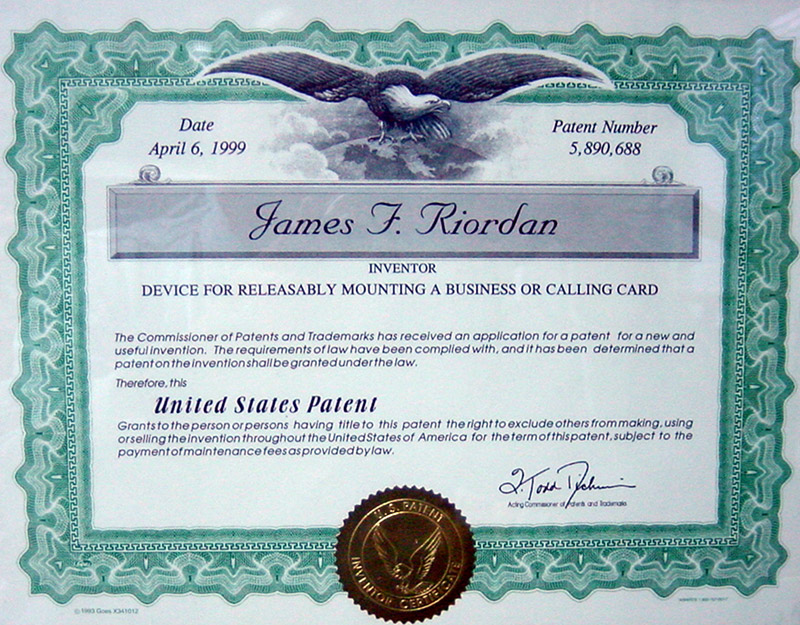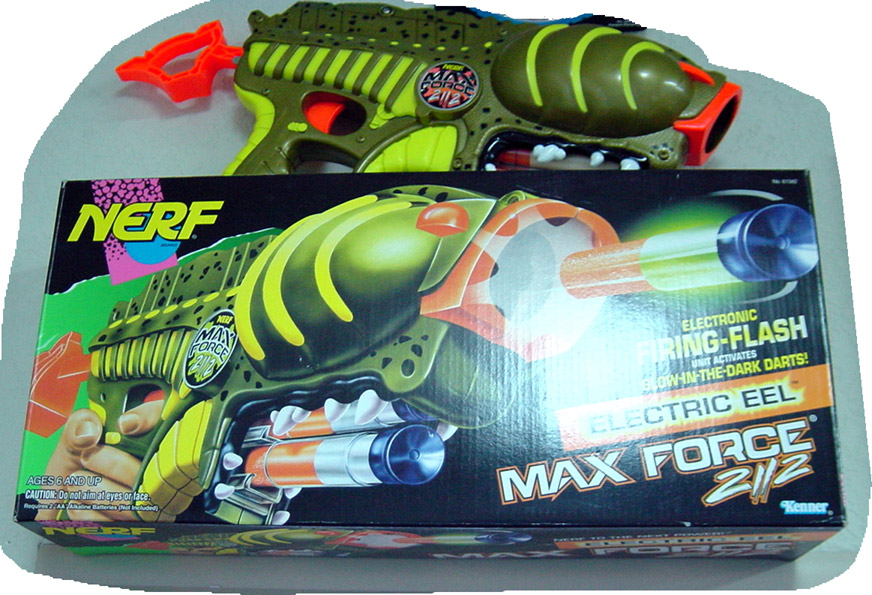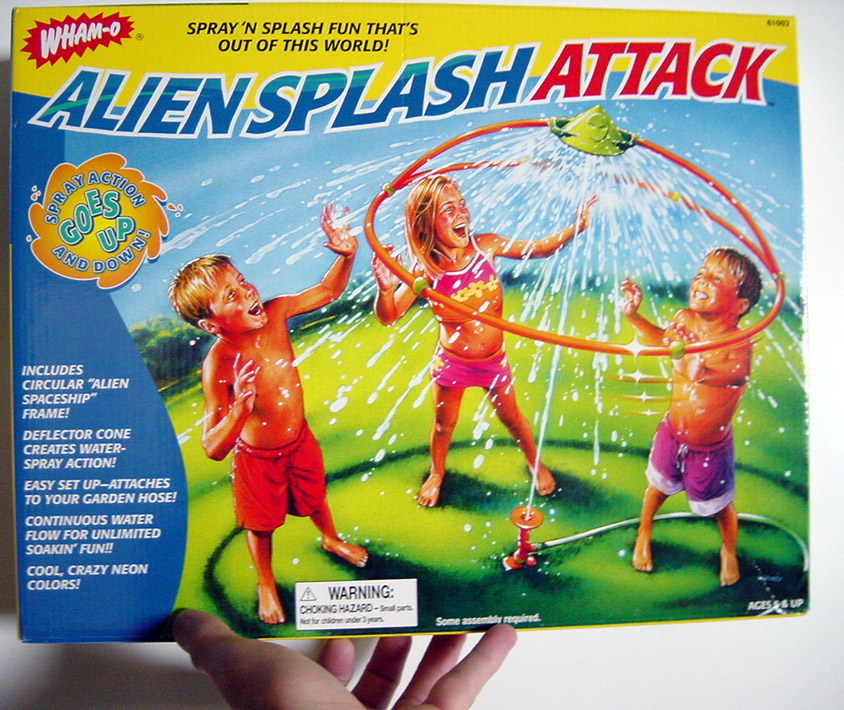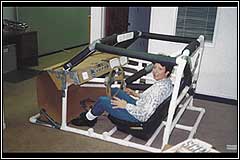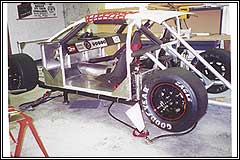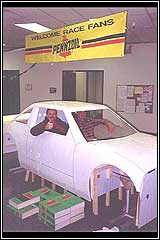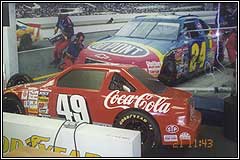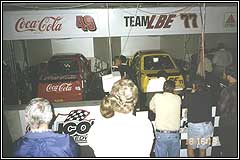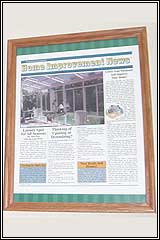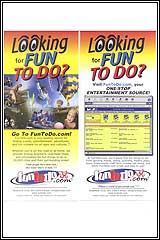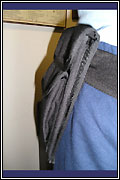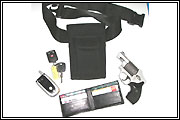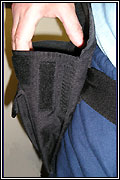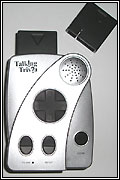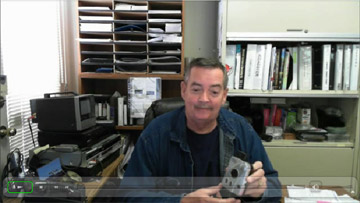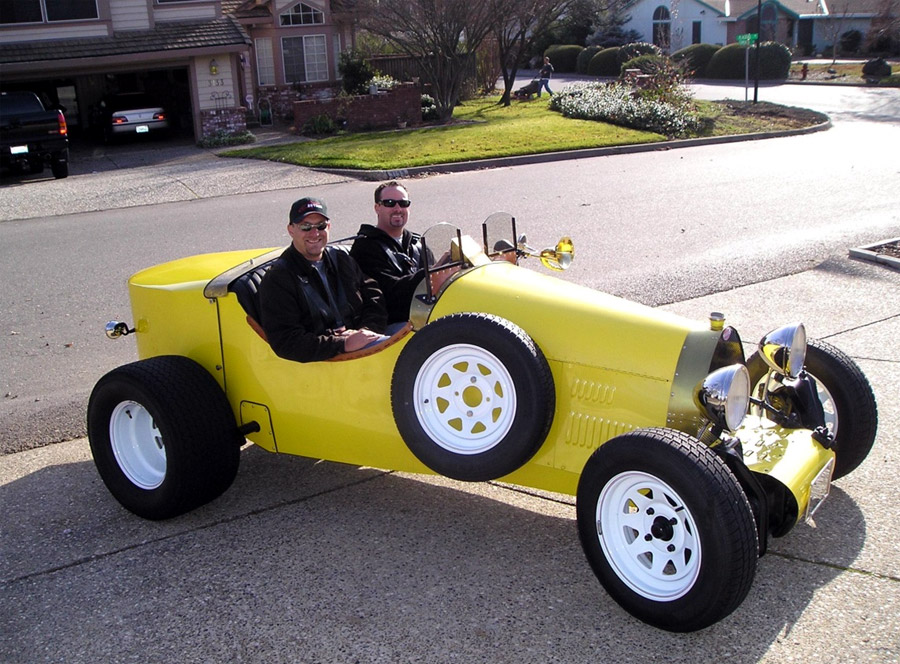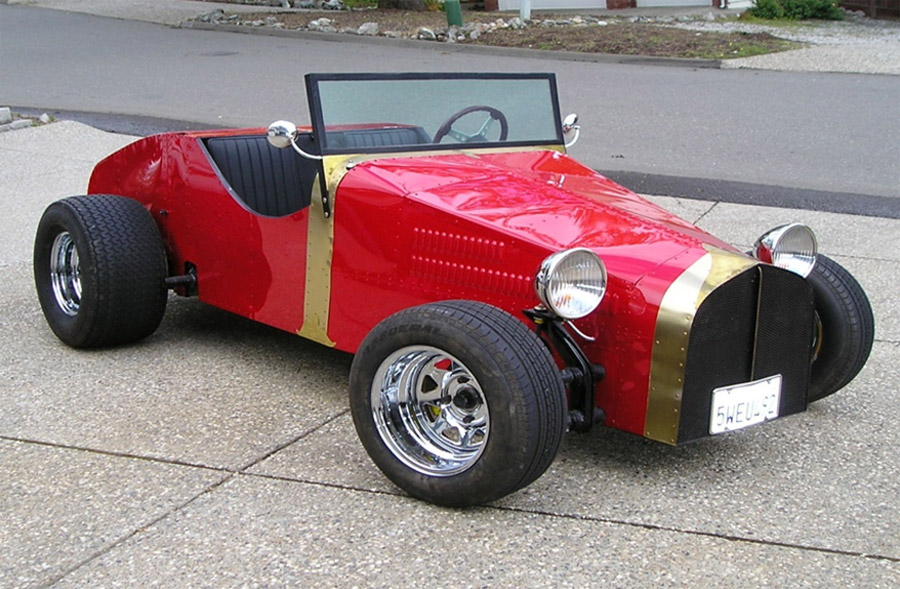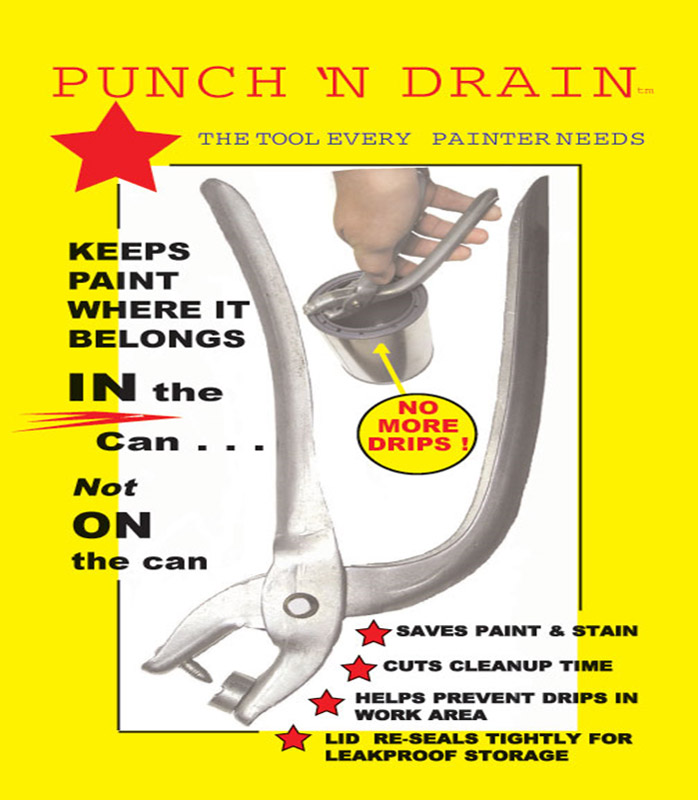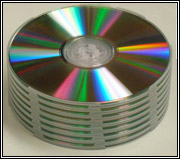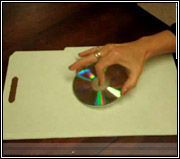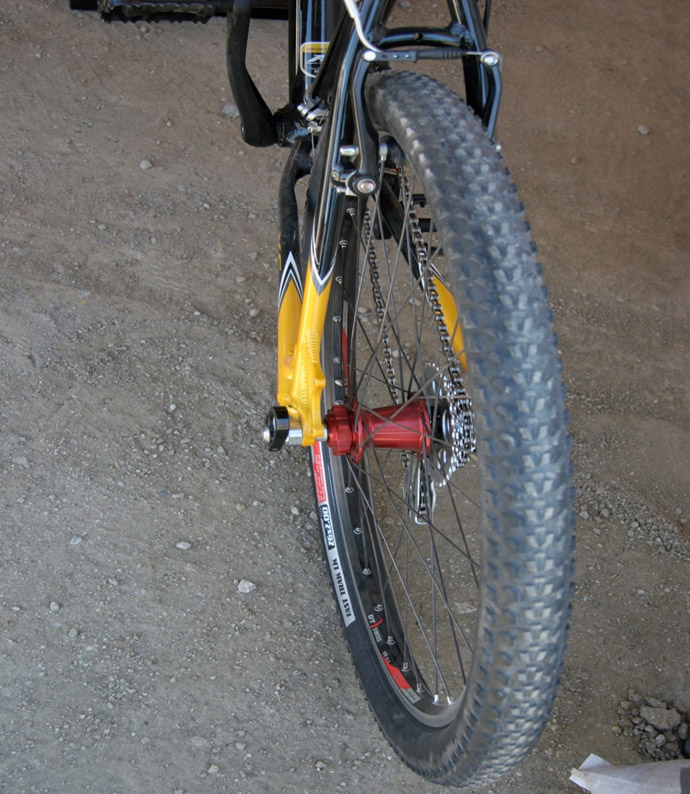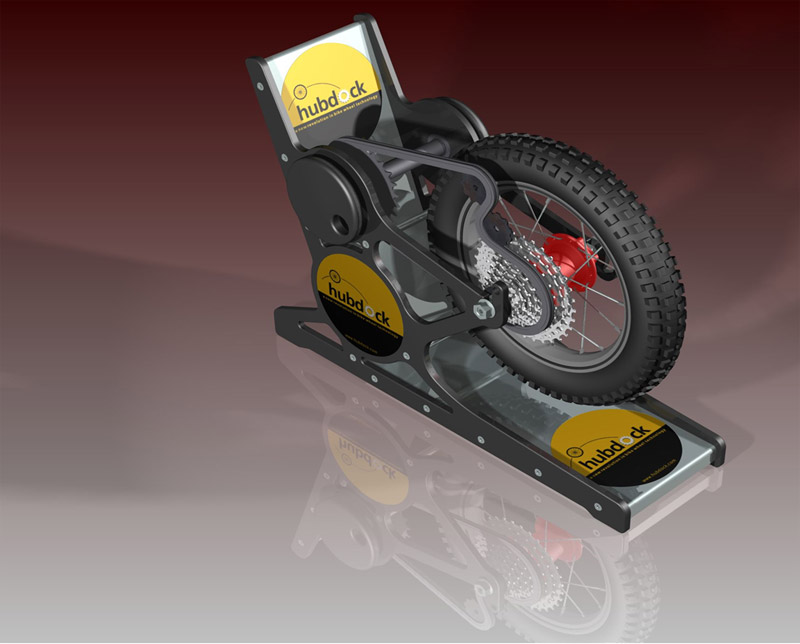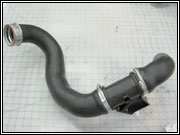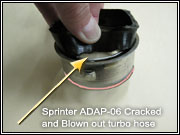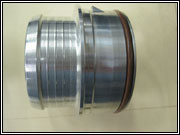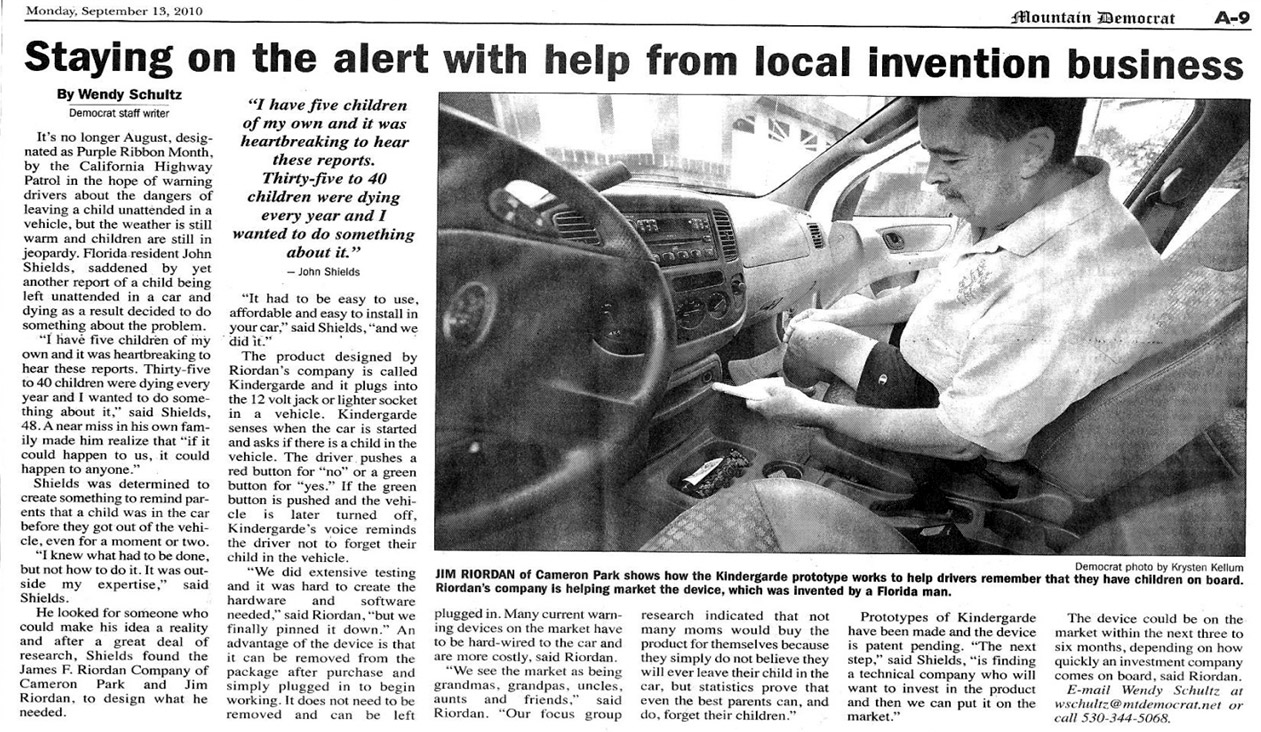
- Homepage
- About Us
- Our Products
- Inventor Assistance
- Idea & Invention Services
- Product Evaluations
- Helpful Links
- Contact Us
Not a day goes by that I do not get inquiries from folks wondering what to do when they get an idea for a new product.
I have spent many of my years working with companies and individuals helping them with R&D, manufacturing engineering, production, marketing, sales, and distribution and then helping them deal with subsequent success or failure of new products in the market place.
In this BLOG I will share with you some of the top tests I have identified to maximize the chance for success and minimize the chances for failure. I will also share with you some of my personal successes and failures and the lessons I have learned.
As a young man graduating (barely) from High school, I had no idea what I wanted to do for a living. I could not conceive of a life consisting of getting up and going to the same job at the same company for the rest of my life as many of my blue collar Irish ancestors had chosen, or been forced to do.
One day, as I was glancing through the classifieds looking for what jobs were listed, my dad, a successful entrepreneur and businessman, (and my greatest mentor), asked, "what are you doing son?" I told him I was looking through the ads to see what jobs I might be able to do. He sat down with me and said, "Son, you are going at this from the wrong direction. You should be thinking about what you WANT to do and then search for the companies who offer those types of jobs. Then, you should 'camp on their doorstep'. Keep showing up every day or so asking what jobs might be available at that particular business. Be persistent. That way when you get hired, you will be learning something you wish to know while still earning a living. Work at each job until you find you have learned what you felt you wanted to know, and then, do the same thing again until you finally find something you really wish to pursue as a vocation or, better yet an opportunity to start your own business".
That is what I did. Of course at that age I wanted to do everything. . . .I was living in San Jose back then and Dad gave me enough money to go to Lake Tahoe in the mountains for a weekend and told me to, "Go find a beautiful mountain area with an amazing view and spend the weekend soaking up the beauty, thinking and concentrating." I suppose nowadays we would call that "meditating". Anyway, it was inspirational for me. I came back deciding I loved hot rods and I wanted to work on cars. My dad, as a high level executive, I'm sure was not enchanted, but encouraged me to "get started, follow your dream." Within a few weeks I had landed a job at Andre Engine Builders in San Jose after I had pestered this older Swedish guy, whom we simply called "Swede" to take me on as an apprentice. He taught me to build engines wearing white gloves and to this day, 48 years later I am still building engines and have never had one of my engines blow up. Everything Swede told me to do, I did.
At the same time, there was another kid a few years older than me, who thought he knew it all, and whom the Swede despised since that kid refused to follow meticulous instructions. One day this kid walked by and told Swede, "Hey Swede, I made mechanic today". Swede never looked up, he just said, "You may have MADE mechanic, but you'll never be one.". A few minutes later I asked Swede, "Say Swede, will I ever be a "mechanic?" His answer was, "you can be whatever you want to be because you listen, you learn and you put into practice what you learn." I never forgot that.
After learning to build car engines, I wanted to learn how to build motorcycle engines and I went to work at Emery's Honda in San Jose where I began work as a motorcycle mechanic and discovered motorcycle engines and RACING. A love I was to follow as a hobby for many years.
After getting engine building mastered, I decided I wanted to learn how to MAKE the parts I was assembling at previous jobs. Subsequently, I became a machinist learning to run mills, lathes, surface grinders, then worked at a sheet metal shop and learned brakes, shears, punches and spot welding. From there I went to work at Frito-Lay in a potato chip factory, which started out as one of the worst jobs you could imagine. I had to lie on a "creeper" and roll around underneath the potato chip conveyor belt cooling lines and grease all the roller fittings. The building was hot, the rollers were hot and grease would run down my arms into my armpits. Real fun. And all the while learning virtually nothing while working alongside guys who had done this job for years. I could not imagine that.
One day, a foreman came down from "upstairs" which was considered "heaven" since it was air conditioned and the jobs varied day to day. The foreman asked, "Anyone here know how to weld?" I immediately raised my hand and said "I do". The foreman quickly said, "follow me", and I was on my way "upstairs". Arriving upstairs, I was immediately assigned to a welding supervisor who was overseeing several guys welding angle iron frames together for shelving. He handed me a welding helmet and gloves, put a "stinger" in one hand, gave me a pair of gloves and a handful of "stick rods" and some pre-cut angles and told me to, "assemble the pieces as the other guys were doing".
Anyone who has ever learned arc welding already knows what is coming. Every time I touched the rod to the angle, it stuck and buzzed until I pulled it away. I did this over and over until one of the kind older guys came over and said, "kid, you never welded in your life." I said "no sir I did not, but I would do anything to get out of that last job and if you will show me how I will practice and learn fast." He showed me how to strike the rod like a match against the metal angle to get the "arc" going and then make half-moon crescent shape movements until I could lay down a decent "bead". After I learned Arc welding I went on to Mig (metal and Inert Gas) welding, TIG (Tungsten and inert gas) welding and good old fashioned acetylene torch and wire welding and brazing. When I left Frito Lay I could lay down a pretty decent "bead" and darn near weld anything to anything. All thanks to the guys who cared enough to teach me. Thanks guys.
I had always wanted to learn how to drive some heavy equipment, so I applied for a job with, if my recollection is correct, a company named "Steve Eachus Underground Construction". However, instead of learning heavy equipment I was assigned to digging ditches. DEEP ditches, and then laying in heavy pipe. That was where I worked with the most foul-mouthed smelly and dirty people I have ever known. After a couple of months, I was about ready to quit, when the foreman came over and asked, "Any of you boys drive a backhoe?" . . I immediately put up my hand and he said, "climb on out and let's get going." I walked over to that backhoe climbed in and the other backhoe operator was now watching me gingerly testing the different controls and he came over and said, "you ain't no backhoe driver", I begged him to let me try and he thankfully covered for me and even spent a Saturday with me teaching me the fundamentals I needed to do the simplest operations and then made sure when we worked together that he "had my back" until I could pass the apprentice test. That is where I had my first exposure to unions which I still dislike to this day. I had to join the Operating Engineers Union who never did a thing for me except suck up dues. Over the years I was forced to join several different unions and I never met one that I liked. I wanted to work fast. They wanted to work slow and a few of them told me so in no uncertain terms. That is how I saw it anyway. That is why I ended up as an entrepreneur.
During the Vietnam War, I was "4F"d out of helicopter pilot training because of multiple broken shoulders and chronic dislocations from motorcycle racing. I then went to work at FMC in 1966 at San Jose's Ordnance Engineering plant as supervisor of a production line using German "Wafio" nail making machines with custom die boxes modified to produce dart-like "flechettes" for the "Beehive" bombs using 105 and 106mm howitzer shells. My job was machining and maintaining forming dies for making these parts used in artillery shells. I left FMC in 1968.
My next leap was to building fiberglass boats and learning hand layup of fiberglass and eventually operating a "chopper gun" building boat hulls. That was probably the worst, itchy-ist job a person could imagine, however to this day those basic fiberglass skills are still put to use occasionally on new products and projects my company builds.
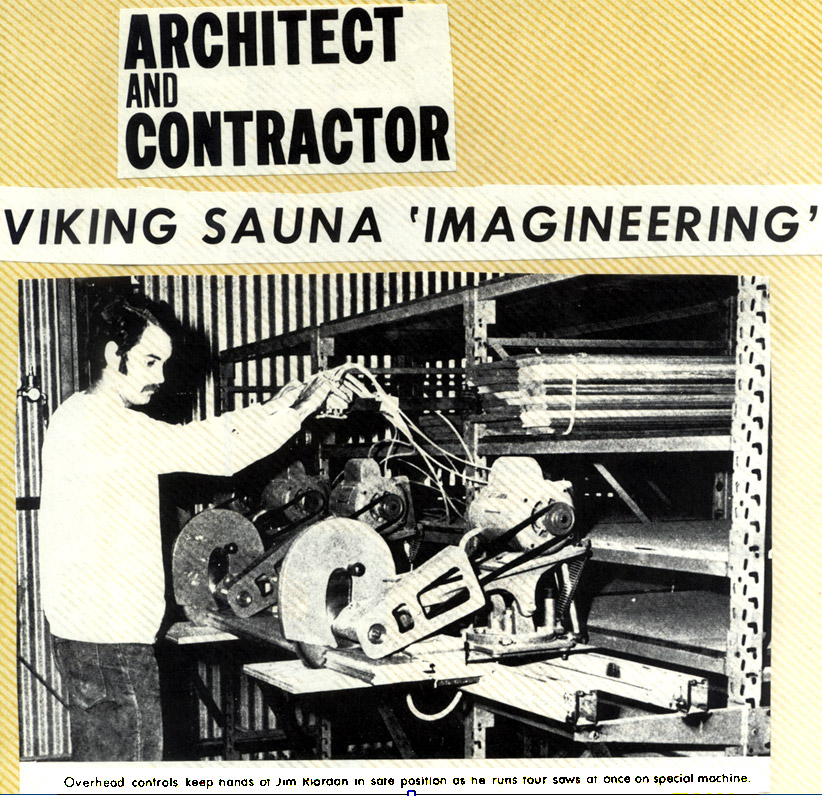 From there, in 1968 I went to Viking Sauna company and worked my way up to production Manager where I
directed all phases of manufacturing including plant layout, hiring and firing of personnel, capital equipment purchases and inventory control. I designed
and fabricated specialized machinery and tooling to increase production capabilities and learned machine design techniques from a true master, Lennard
Nylin. while still in my early 20's. It was here that I began to design electronic production and assembly tools.
From there, in 1968 I went to Viking Sauna company and worked my way up to production Manager where I
directed all phases of manufacturing including plant layout, hiring and firing of personnel, capital equipment purchases and inventory control. I designed
and fabricated specialized machinery and tooling to increase production capabilities and learned machine design techniques from a true master, Lennard
Nylin. while still in my early 20's. It was here that I began to design electronic production and assembly tools.
When I left, the Company president Bob Jones gave me this recommendation: "It seems hard to believe that the time has passed so quickly and that you
have exceeded five years in our employ. During this period of time you were most fortunate in participating in the largest growth period in Viking Sauna
Company's history. It was during this period of time that you also can look on with pride as many of the innovative items that came into being in the
manufacturing area were either those of your own making or the result of the stimulation that you created among your people in the management phase of
your work."
 Then, in my
mid 20's, from 1973 till 1976 I ended up back at FMC, this time as a Senior Inspector since I
was already trained in CCM or Computer Coordinate Measuring devices and operators of those devices were in short supply. One of the projects I worked on was
the "MICV" or Mechanized Infantry Combat vehicle. I also worked on a number of "secret" and classified projects that were a real learning experience. I also
did some work on the "MAFFS" project which was the Modular Airborne Fire Fighting Systems. These units could be field-fitted quickly and temporarily into a
C130 and could download a huge volume of fire retardant in one fast drop.
Then, in my
mid 20's, from 1973 till 1976 I ended up back at FMC, this time as a Senior Inspector since I
was already trained in CCM or Computer Coordinate Measuring devices and operators of those devices were in short supply. One of the projects I worked on was
the "MICV" or Mechanized Infantry Combat vehicle. I also worked on a number of "secret" and classified projects that were a real learning experience. I also
did some work on the "MAFFS" project which was the Modular Airborne Fire Fighting Systems. These units could be field-fitted quickly and temporarily into a
C130 and could download a huge volume of fire retardant in one fast drop.
FMC XM723 Mechanized Infantry Combat Vehicle
It was during this time I started my first business in my home shop repairing motorcycles and building engines for guys on the national race circuit in the evenings while continuing the day job at FMC, mainly to keep the health benefits for my wife Lynn and our new son Brett.
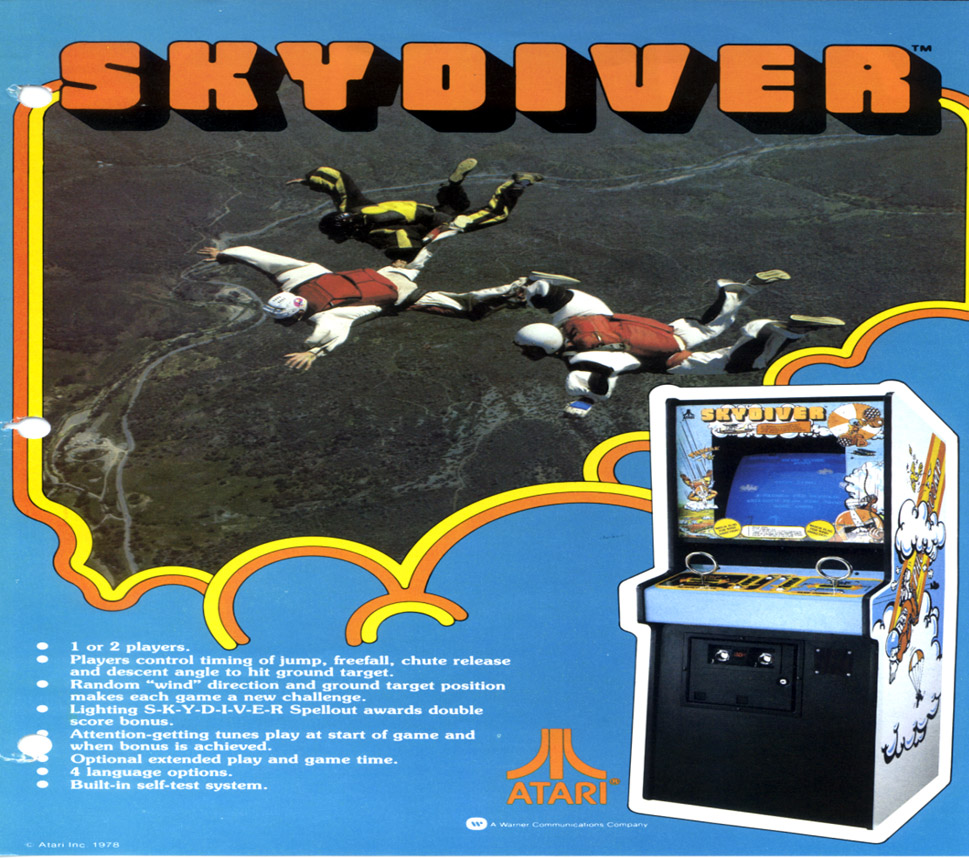 One
day, in 1976 a guy came in and asked me to look at his motorcycle for repair. Turns out it was one of the early managers at a tiny company called Syzygy,
(later AKA Sente) which was a company started by Nolan Bushnell and Ted Dabney. A company destined to be the forerunner to ATARI, this link provides a pretty
darn accurate compilation best as I can recall http://www.landley.net/history/mirror/atari/museum/Atari-Timeline.html.
One
day, in 1976 a guy came in and asked me to look at his motorcycle for repair. Turns out it was one of the early managers at a tiny company called Syzygy,
(later AKA Sente) which was a company started by Nolan Bushnell and Ted Dabney. A company destined to be the forerunner to ATARI, this link provides a pretty
darn accurate compilation best as I can recall http://www.landley.net/history/mirror/atari/museum/Atari-Timeline.html.
Atari was the game changer in electronic gaming. Nolan and Ted and Steve Bristow, along with some other programmers perfected what I believe was the first viable electronic game called "Pong". (A great little game, which I still have one of the first versions of, and it still works.) I joined Atari in 1976, just as they were beginning to build the first prototype arcade pinball game. Atari was exciting to work for.
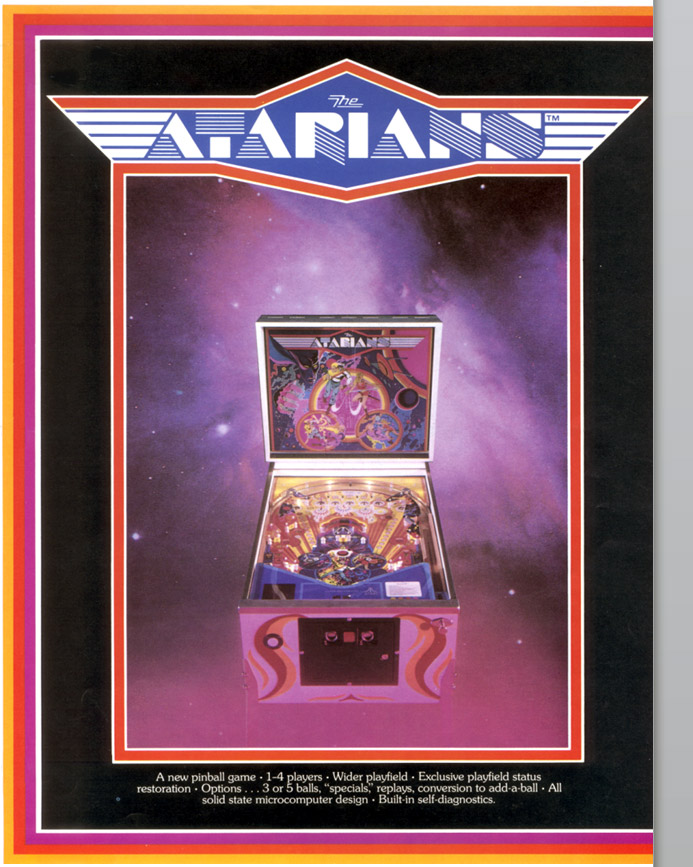 Some of our programmers
and designers were incredible. Steve Bristow, Lyle Rains, Ed Logg, Howie Delman, Steve Jobs and Steve Wozniak (Jobs and Wozniak went on to start
Apple Computer) were just a few that immediately come to mind. I started at Atari in Los Gatos to supervise the first Pinball production line, and
then moved with them to Sunnyvale after, if my memory serves me, the Mayor of Los Gatos none too politely asked Atari to abandon the Los Gatos
facility after too many raucous Friday afternoon parties at Vasona Park joined sometimes by Nolan himself. Even though my primary work was on pinball
I also worked with the "coin-op engineering" dept. where I had the chance to work on other mechanical projects as well, including the hand control for
the Skydiver game .(During that time I was a novice skydiver as well). The picture on the poster from 1978 was taken by my Pope Valley Jump Center friends.
Some of our programmers
and designers were incredible. Steve Bristow, Lyle Rains, Ed Logg, Howie Delman, Steve Jobs and Steve Wozniak (Jobs and Wozniak went on to start
Apple Computer) were just a few that immediately come to mind. I started at Atari in Los Gatos to supervise the first Pinball production line, and
then moved with them to Sunnyvale after, if my memory serves me, the Mayor of Los Gatos none too politely asked Atari to abandon the Los Gatos
facility after too many raucous Friday afternoon parties at Vasona Park joined sometimes by Nolan himself. Even though my primary work was on pinball
I also worked with the "coin-op engineering" dept. where I had the chance to work on other mechanical projects as well, including the hand control for
the Skydiver game .(During that time I was a novice skydiver as well). The picture on the poster from 1978 was taken by my Pope Valley Jump Center friends.
 |
| Pinball harness assembly line,
Chihuahua Mexico |
I also solved problems with Atari's playfield manufacturing vendor in Chicago, and problems outside the plant with finished pinball machines at distributors' facilities in Los Angeles and in Wiesbaden Germany at NSM /Lowen Automaton one of our distributors. Atari was then bought by Warner Communications and they eventually decided to shut down the pinball operations so I oversaw the shutting down of the Sunnyvale production facility.
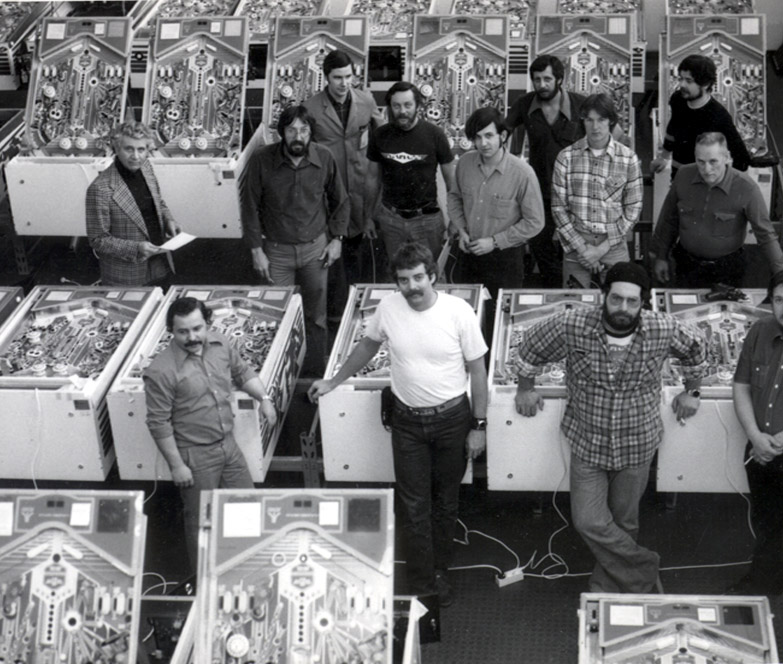 |
| Photo above, I am in white shirt |
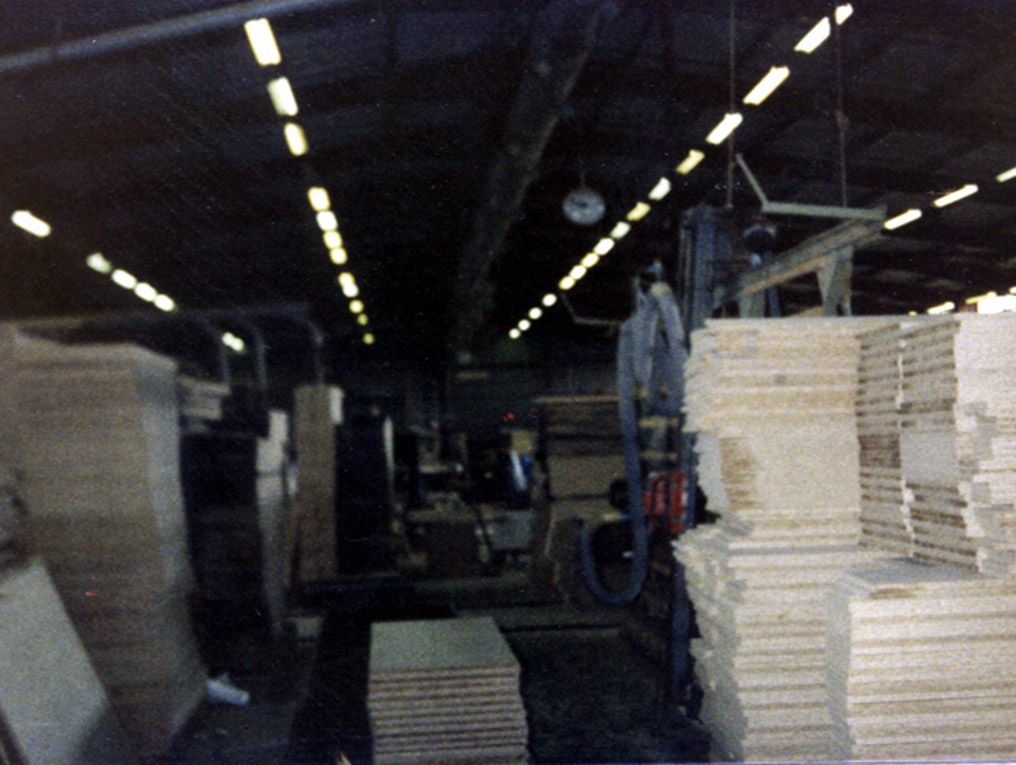 |
| (Above is photo of the factory floor before I started) |
Within only a few weeks we turned the factory around and began turning out 100 cabinets per day, then 125 per day. About 50 of each upright and 25 hexagonals per day. When I left we were making 151 per day, about 25 units more than the goal I was sent over to achieve.
That project for Atari in Ireland really launched our little business. And on our off time gave me a chance to see the hometowns of my mom's ancestors in County Kerry and my dad's ancestors in Inchigeela, County Cork. We even got some free excitement . . . While we were staying in Tipperary, the IRA came into town and robbed the bank!
Project Scope:
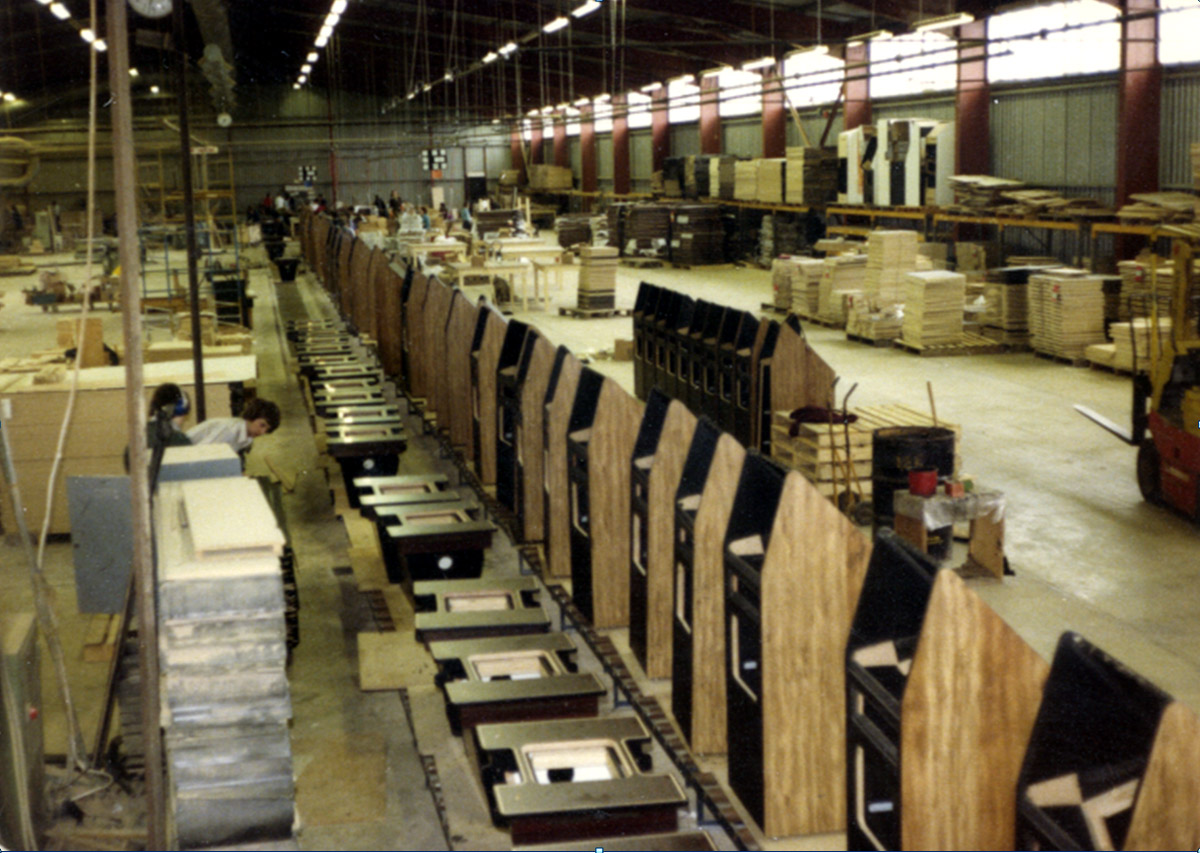 Atari had a contracted
interest in a 30,000 square foot facility in Tipperary, Ireland that had been a kitchen cabinet factory and was (unsuccessfully) trying to change over to the
production of video game cabinets. The factory, Murray Kitchens,a former kitchen cabinet factory, had contracted with Atari to produce two sizes of upright video
game cabinets and a third hexagonal "cocktail table" game cabinet, at the original requested rate of 80 total cabinets per day and building up to 125 per day. Instead
they were able to produce only 20 cabinets per day of one style of upright cabinet. The Riordan Company was brought in to bring production up to speed as quickly
as possible. Atari's mandate to Riordanco was to produce 125 per day of the three styles or close the factory. The exact words from Atari's vice president were,
"Jim, make it work or turn it into a Badminton court." When we arrived at the plant, fresh off the plane , I was greeted by a room full of English engineers who,
before even introducing themselves, asked sarcastically, "What makes you think you can do this any better than we are?" I said , "because I am making 500 a day in
the states and my boss told me to either make this place perform or turn it into a badminton court, so I expect you gentlemen to either work with me or go buy some
badminton racquets and I'll be on the next plane back." They had an immediate change of attitude and you can read their comments below.
Atari had a contracted
interest in a 30,000 square foot facility in Tipperary, Ireland that had been a kitchen cabinet factory and was (unsuccessfully) trying to change over to the
production of video game cabinets. The factory, Murray Kitchens,a former kitchen cabinet factory, had contracted with Atari to produce two sizes of upright video
game cabinets and a third hexagonal "cocktail table" game cabinet, at the original requested rate of 80 total cabinets per day and building up to 125 per day. Instead
they were able to produce only 20 cabinets per day of one style of upright cabinet. The Riordan Company was brought in to bring production up to speed as quickly
as possible. Atari's mandate to Riordanco was to produce 125 per day of the three styles or close the factory. The exact words from Atari's vice president were,
"Jim, make it work or turn it into a Badminton court." When we arrived at the plant, fresh off the plane , I was greeted by a room full of English engineers who,
before even introducing themselves, asked sarcastically, "What makes you think you can do this any better than we are?" I said , "because I am making 500 a day in
the states and my boss told me to either make this place perform or turn it into a badminton court, so I expect you gentlemen to either work with me or go buy some
badminton racquets and I'll be on the next plane back." They had an immediate change of attitude and you can read their comments below.
Results:
Within eight weeks' time, the Riordan Company led team converted the factory to a new method of operation, with new assembly areas and techniques. We trained all
personnel in the new techniques, and, after training, selected new group leaders. The changes resulting in the production of 151 cabinets per day, of three
different styles. The additional 26 cabinets per day was well over the target of 125 that Riordanco was sent to achieve and resulted in additional earnings to
Atari of over $1,000,000.00 per month.
What our Clients said:
"I would like to commend Mr. James Riordan and the staff of Overnight Engineering (the Riordan Company) for outstanding work on a project recently completed for
Atari Inc. The project consisted of solving problems associated with the fabrication and quality of Atari cabinets at our factory in Tipperary, Ireland. During
a reasonably short period Mr. Riordan and his staff accomplished an inordinate amount of work and met all project goals within the allocated timeframe. I would
be happy to recommend to others the services of Mr. Riordan and Overnight Engineering."
Atari
Noah L. Anglin
Vice President
Engineering/Manufacturing
Coin-Op Division
"In his time here at Murray Kitchens, Mr. Riordan has displayed great energy, determination and decisiveness in overcoming all problems. He has not hesitated
to get involved in any work required and demonstrated leadership of a high order and has established a good relationship with his staff. We are pleased with his
achievements in the short period he has been involved with our company and would have no hesitation in recommending him for any similar project."
W.E. Swift
Director
Murray Kitchens Ltd. Ireland
"Mr. Jim Riordan was engaged by Atari to undertake an in-depth survey of our cabinet making facility here in Tipperary and to recommend whatever changes he
thought necessary in our production, assembly, and materials handling systems. This had become necessary due to the fact that we had changed over from the
manufacture of kitchen furniture to video game cabinets. To say that he was successful would be both an understatement and a lack of gratitude for what turned
out to be a remarkably impressive performance. Not the least of his achievements was his ability to "sell" both himself and his ideas to an extremely conservative
Board of Directors, a task which I myself as Plant Manager had unfortunately failed to achieve. He has what I can only describe as a fanatical approach to getting
the job done, an attitude which we Europeans sometimes find a little abrasive, but, after watching him at work, I can only admire."
R.J. Carr
Plant Manager
Murray Kitchens Ltd. Ireland
"Jim
"I have been intending to write to you for the past two weeks to express my appreciation (and admiration) for the Consultancy Project you completed at our
Ardfinnan Plant, at the end of June. The changes you initiated are continuing to bear fruit and will continue to do so for some time to come."
Jack Murphy
Managing Director & Chairman
Murray Kitchens Ltd.
Around this time, I also began working with Tim Leary and Nolan Bushnell on the Alliance for American Innovation, a think tank and start up incubator for Inventors. We went full time, and incorporated in 1981.
I continued working with Atari until I closed the doors on the pinball factory and then continued working with Nolan Bushnell and Tim Leary on The Alliance for American Innovation and Chuck-E-Cheese Pizza partors.
I bought more machines and tooling and began to offer quick turnaround fixes, literally overnight in many cases for Silicon Valley corporations in need of quick fixes.
We incorporated Overnight Engineering and changed our name to the James F. Riordan Company, Inc., or "Riordanco" for short.
1980
For: BASF Systems
|
Project Scope:
BASF's new hard drive division, located in Los Gatos, CA, was having a vibration problem with its hard disk drive hubs, causing the heads to contact the
disk and crash. The reject rate for the hubs was almost thirty percent and production was slowed to a near standstill. The Riordan Company was brought in to
investigate the problem and fix it. We were to examine the documentation and machining methods for errors and omissions and to make enough hubs to keep the
production line going.
|
Results:
The chief engineer thought the problem was a TIR (total indicated run out) problem in the manufacturing of the drive hubs. After a review of the
documentation and examination of the rejected parts, Jim Riordan determined that the actual cause was a concentricity problem resulting from two setscrews,
which affixed the hub onto the shaft, being at 90 degrees from each other rather than having three, sequentially torqued setscrews at 120 degrees spacing
and a closer tolerance "press" fit between the hub and the vendor-supplied motor shaft. Tightening down the original two setscrews caused the hub to be
forced off center on the shaft causing the vibration. Riordanco re-machined the hubs in their inventory, and continued making the hubs with the new spacing
and tolerances until production was finally able to reach full volume two months later at which time the company sourced the parts offshore. The offshore parts
were then built to our specifications.
What our client said:
"Production is up rejection rate is acceptable, thanks, here is your check!"
BASF Plant Manager.
1981
For: Pizza Time Theaters
|
Project Scope:
Pizza Time Theaters was experiencing catastrophic failure of the animated character in the "band" which played the banjo. They were using real
banjos and the rotating mass of the banjo was causing the shoulder stops on the animated character to break leaving it beating itself up against it's
enclosure (while the kids laughed hysterically) and sometimes breaking the expensive banjos. Riordanco was called in to find and implement an immediate
solution.
|
Results:
After review of documentation and mechanical design, Jim Riordan found that there was a large inventory of shoulder parts and expensive shoulder
stops, which would be too costly to modify and would take too long to produce. Instead, Riordanco designed a very lightweight polyurethane foam banjo
that was visually appealing and detailed and which could be easily molded using silicone molds and compression molding techniques. Within one week,
Riordanco constructed the banjo mold pattern, made the silicone molds, and began pulling usable parts. Eventually, every real banjo in each Pizza
Time Theater location was replaced with Riordanco's polyurethane ones.
|
Footnote:
After the success of the polyurethane banjo, Riordanco was called in to solve a similar problem with the Moose character's wooden antlers breaking
due to the sudden stops of the robotics. We made a pattern, made a cutting die, and began stamping out styrofoam antlers. We coated them with a
light layer of fiberglass cloth, and delivered hundreds of these light but strong antlers to the sites. None of Riordanco's antlers ever broke.
What our client said:
"Reduction of the moving mass weight of the banjos and moose antlers has eliminated our breakage problems with the shoulder stops. Thanks again!"
Mr. Mike Crew
Senior Designer
Pizza Time Theaters
1982
For: Pizza Time Theaters
|
Project Scope:
To design a wall clock with a bright red LED digital display contained within the mouth of a plastic molded head of the mascot character
for Pizza Time Theaters, the mouse known as "Chuck E. Cheese". When a customer clapped their hands, an electronic Schmidt trigger sensed the
clap and caused the mouth to open revealing the clock.
|
After a brief (adjustable length) pause, the mouth closed, and the display shut down and waited to be reactivated.
Results:
Jim Riordan's original invention, which featured the head of a "Yetty" or "abominable snowman" was reconfigured to work with the
Chuck E. Cheese molded head and was placed on display in the first Pizza Time Theater store. It was placed along the wall where
customers would line up to place their orders, so the kids could clap their hands and watch Chuck E. Cheese's mouth open up to
display the red LED display clock. It proved to be an exciting attraction.
|
Production molds were fabricated to allow the clocks to be able to be used as redemption prizes in the game room.
What our Client said:
"This will confirm our conversation of today on test marketing of the 'Pizza Time Head' at our Kooser location. Julie Green of
our company will interface with you on store location and graphic presentation of the head and will also compile the test marketing
results. Harold Goldbrandsen, head of our R & D engineering effort, will mold a Chuck E. Cheese head to replace the monster
currently used. Bob Lundquist, head of our Country Store will be using the product for a redemption item in our game room."
Gene N. Landrum
Vice President, Operations
Pizza Time Theaters
1982-1984
For: Pizza Time Theaters
|
Project Scope:
Manufacturing and assembly of pneumatic robotic devices and animated characters for a chain of restaurant/entertainment centers.
Pizza Time Theaters was unable to keep up with orders and wanted a contract manufacturing company to take over manufacturing of
the parts and final assembly of the products. Urgent needs required startup of production within two weeks after receipt of
order. Riordanco was called in to solve the design problems and serve as a contract manufacturer.
|
Results:
Over a two year period, Riordanco provided design reviews and design consulting. When designs were finalized, we fabricated parts,
assembled, tested and delivered products including production assembly fixtures, quality control go/no go gages, fiberglass molds,
flag waver assemblies, robotic head and eyeball mechanisms to the main location resulting in a fabricated assemblies cost
reduction of 20% and an operations reliability increase of 35% to Pizza Time Theaters.
|
What our Client said:
"Many times over the years Jim has helped us to turn a disaster into a manageable solution. I would highly recommend him to any company seeking immediate
solutions for urgent problems."
Mr. Richard Harris
Sr. Facility Manager
Pizza Time Theaters
"Jim's depth of knowledge of many skill-sets and design alternatives allows him to have a unique capability to literally design on his feet. There have
been times he has been inspirational to watch in action. He has helped us design many post production fixes which have been retrofitted to our robotic
characters in all of our store locations."
Mike Crew
Senior Designer
Pizza Time Theaters
1983
For: Exidy Games
Project Scope:
Upon inspection of Exidy's new arcade games on the production line, Jim Riordan noticed that the coin doors were easily "jimmied" (sorry) to get free game
credits. Riordanco was asked to review the design and provide a solution.
Results:
Riordanco designed and fabricated a sheet metal bracket which was spot welded into the coin door assemblies, effectively blocking access to the coin door
credit switch from outside. Riordanco then provided retrofittable brackets for existing games and a newly designed bracket for the next production run.
What our client said:
"Another great save. I can always count on you."
Noah Anglin
Vice President
Exidy Games
1983
For: Exidy Games Project Scope:
Exidy redesigned its power supply for its coin operated video arcade games causing two thousand power supplies to require an additional wire to be
soldered onto the backside of each transformer. The solder lug was "conveniently located" at the back lower corner of an "L" shaped power supply tray,
making it virtually impossible to get to without complete disassembly of each power supply. The Riordan Company was brought in to see if any alternate
methods might be employed to keep the production line flowing.Results:
After three days of review, we designed and fabricated a unique soldering device which could reach down into the nearly unreachable location and allowed
one handed soldering so the operator could use the other hand to hold the additional wire in place for soldering. We were able to turn around all power
supplies within four weeks time, which included the three days of research.Footnote:
The crude soldering devices which Riordanco fabricated to complete this contract evolved into the patented "Solder-Quik" soldering device which Jim Riordan
designed, injection molded, assembled and sold for years. (Please see the Solder Quik, below.What the client said:
"Once again you have saved us from an untimely and lengthy production line shutdown. First at Atari and now at Exidy. Thanks again Jim."
Noah Anglin
Vice President
Exidy Games
|
1985
Our next product was the Solder Quik device which really never took off as well as we hoped despite a lot of time and money on
our part. And this is a GREAT product. I showed it to David Packard of Hewlett Packard, whose factory was nearby in San Jose and he loved the idea.
They began using it in their printed circuit board touch up facility and he told me it reduced the touch up time by 30%. Tim Leary and Pat DeRose
http://www.derosewine.com and I took it to trade shows
in Boston and LA and got great results but few orders despite the fact that companies who bought them were having excellent results . . . Even
NASA was using it at Ames Research Center at Moffett field in Sunnyvale.(see their endorsement below, and they typically never endorse
anything! Further, I donated this product to many disabled vets who were able to continue working as an electronic tech after losing their other arm or hand.
After giving it our best shot for a couple of years I finally sold it to another tool company for far less than it was worth. I am STILL using my Solder Quiks in my shop today and still cannot believe it was not a top seller. It was such an incredible device, worked so well and saved so much time in soldering wires, fittings and printed circuit boards.Guess it just was not in the cards. However, I will never give up inventing. And I will never believe I have an absolute winner until the money is in my hand. I would suggest that every inventor follow that thought.
|
|
The Solder Quik™
An attachment which fits on a standard pencil type soldering iron and allows a person to feed solder to the tip of the iron by simply turning
a wheel with their index finger. This allows an operator to solder with only one hand, and speeds most soldering operations a minimum
of 30%. This device is also being used to help handicapped workers master hand soldering techniques that were previously not possible
for them. Solder Quick users include N.A.S.A., IBM, Hewlett Packard, Ford Aerospace, Harris Satellite Communications, and Beckman
Instruments. This product was distributed nationally, then sold to a soldering equipment company.
What others say:
"This unit is a remarkable time saving product in most of our operations in the Avionics shop. For all simple wire repair jobs you can
save nearly half the time it would take with the conventional soldering iron. Although there are jobs on printed circuit boards that
are just too tight to use the Solder Quik, about 80% off all circuit board repair and assembly can be accomplished in at least half
the time using the Solder Quik. Since there is no real production here at NASA, the time element of production schedules are not a
factor, however, manpower certainly is. Most repair jobs involving soldering with a conventional iron would require two men but using
the Solder Quik I can do the same job with only one man.
In conclusion, I am recommending that NASA purchase one Solder Quik for each person in my shop and one for the Instrument Shop."
Patrick Atchison, Avionics
NASA-Ames Research Center
|
"The innovative research and production activities you have undertaken on behalf of the disabled are indeed rare. Your most recent inventions, the "Solder Quik" and the "Hand Aid", will definitely be of great benefit to handicapped persons who have opted to work in electronics related industries. In addition, the application of your products into electronics production and repair occupations will not only widen the employment prospects for the handicapped, but will benefit prospective employers as well. Congratulations on your success thus far and best wishes in the future. Please do not hesitate to contact me if I can be of any further assistance."
Sincerely yours,
Norman Y. Mineta
Member of Congress
"Jim,
"In my 30 plus years in the Electronics field the Solder Quik is to me the best idea in all that time in my line of production 'Cable Harnesses'. Invariably
while soldering leads into boards or connectors you need a third hand to hold the lead. This gives it to the solderer."
Vern Brink
Supervisor
Electronics
Goodwill of Santa Clara
"Dear Jim:
This letter is to express to you our appreciation of a job well done in the design and the function of the Solder Quik. Since our installation, three months
ago, we have found increased production and through-put in the touch-up and rework area. All of our touch-up and rework technicians have expressed considerable
satisfaction of "the third hand" concept in assisting the delivery of solder and handling of the printed circuit boards and other solderable components. We
would highly recommend it to anyone requiring high through-put in this area to utilize this product, as it will positively affect the bottom line."
Sincerely
Lawrence P. Dorcsis
President
Xltronix
"Dear Jim:
We would like to thank you for your generosity and thoughtfulness in donating the Solder-Quik soldering setups and accessories to the electronic assembly
training classroom. The Solder-Quik is an innovative and fascinating piece of equipment. We have enjoyed using it in the classroom and have received a great
deal of interest and positive comments from the students who have tried it.
We feel there is tremendous potential for the Solder-Quik in the electronic industry, not only as an aid to someone with a disability but also as a time
saving device for basic assembly soldering. We wish you luck and success with the Solder-Quik and appreciate being included in its debut. Thanks Again"
Nina Bouley
Supervisor of Vocational Education
Sandy Montijo
Lead Instructor
Electronic Assembly Training
Linda Calloway
Instructor
Electronic Assembly Training
Goodwill of Santa Clara County
1985
1985
We continued to "invent to order" for companies seeking either creative solutions or products and also for companies in dire need of a solution for problems in the "field." One such solution we provided to Levi Strauss when they encountered a rather stunning problem with the marking on the men's 501 Jeans®. It seems that someone had mismarked the sizes on the jeans.
|
|
Project Scope:
Riordanco was chosen by Levi Strauss to design, engineer, fabricate, package and ship 2,000 custom Zilog Z-80 based point-of-purchase computers
to help Levi's customers order the correct size 501 jeans to ensure a proper, comfortable fit after first washing and subsequent shrinkage. Levis
needed all of the computers shipped within 120 days of order.
Results:
Riordanco designed and built the 2,000 computers per contract and shipped them to Gap stores and other locations throughout the U.S., on time and within budget.
What our client said:
"Jim
"Thank you for helping to solve a major disaster in our customer's stores. Jeans were being returned by the truckload until you provided us with
a way to educate consumers. We are presently re-thinking the sizing numbering and will use your calculators until it is resolved."
Jane Seamen
Marketing Coordinator
Levi Strauss
1985
For: Apple Computer
Project Scope:
Apple had just released the very first "Macintosh" computer and they were having difficulty inserting and removing floppy disks from their
newly designed floppy disk drive for the new computer. Defective drives were cutting assembly line production to a critical point. Riordanco was
brought in to fix the problem.
Results:
After review, Riordanco determined that the plastic "fingers" on the engagement clutch were too stiff. In order to keep production going, we
reworked all of the clutches in inventory by building a fixture and tool to remove a slight amount of plastic from each finger. We then recommended
changes to the design of the "fingers" on the injection mold which produced the parts, implemented the changes and cured the problem once and
for all. FUNNY NOTE: these first Macs had a 20 megabyte total capacity . . . Can anyone imagine THAT anymore??
What our client said:
"I can't tell you how grateful we are for your expertise and lightning fast solution to what was beginning to look like a monstrous problem."
Robert Hall
Process Engineer
Apple Computer
1985
For: Stanford Children's Hospital
Project Scope:
Stanford Children's Hospital Rehabilitation Engineering Center had been trying to develop a lock-at-will elbow joint for an upper arm prosthesis
for over two years with little success. The Riordan Company was called in to help with the design and provide a working prototype.
Results:
Within three weeks, we designed, fabricated and delivered a simple locking elbow device that was incorporated into SRE's prototype upper arm
prosthesis. They were so happy with the results that Mr. Maurice LeBlanc drove down from Stanford to San Jose to personally bring Jim Riordan a
gift from Stanford Research Center on top of Riordanco's consulting fees. The technology has since been incorporated into many standard upper
arm prostheses, a breakthrough device for upper limb amputees which allows a person to use an artificial arm with "natural" movements and without
the need for a "harness" to operate the prehensor (hook unit).
What the Client said:
"Your ability to deliver in three weeks a design solution for a project we had been working on for two years has all of us in awe. I have a special
present for you from our group which I will be delivering to you personally next week."
Mr. Maurice LeBlanc
Research and Development Manager
Stanford Childrens Hospital
Footnote:
The present that Maurice brought to Jim Riordan was a unique pair of knee high socks which had every bone in the leg and foot accurately portrayed.
Maurice knew I had broken nearly every one of those bones while motorcycle racing so he knew it would have special meaning to me. THANKS MAURICE!
A really fun gift which Jim deeply appreciates because of the gratitude behind it. He still has and treasures those unique socks today. Through the
years, many of Riordanco's clients have brought us gifts after project completion, a practice which Jim has failed miserably to discourage.
1985
For: Quantum Computer, Inc.
|
Project Scope:
Riordanco was called in to design and supply equipment and fixtures to clean parts which were to be assembled into Quantum disk drives, to solve
problems which were causing a high failure rate of the drives due to flying heads contacting surface debris (measured in Microns) on hard disks
supplied by a vendor.
Results:
After investigation, Riordanco was able to find the actual problem which had been created at the disk vendor. We were able to reduce the reject
rate to an acceptable level of less than 1/2 of one percent, and save Quantum over $200,000.00 in equipment costs.
What our client said:
"Jim,
"Thanks for finding the real problem"
Bill McGeever
Purchasing Manager
Quantum Computer
|
1985 to 1988 For: The Riordan company, 1nc.
I checked on patentability and found that someone had patented a light up champagne glass years ago so the concept would not be patentable . . . but by golly it would sure sell. So, I contacted the manufacturer, Indiana Glass Company and asked them if they would give me an exclusive on the glass for a certain purpose unrelated to standard glass sales. I told the Prez if he did, I would buy them by the truckload. . He agreed to visit me in California and discuss it. As soon as he saw it he liked it and he stayed true to his word. Results: And, an incredible story came out of this product.. My wife and I were doing a lot of skiing in those days. I was pretty active in Giant Slalom Ski racing and we were traveling from San Jose to Lake Tahoe almost every weekend. One weekend we arrived home to a message on our answering machine that said, "Hi this is Brooke Shield's mother and Brooke got one of your mugs at Princeton and it did not work. Could you please give me a call."
We also learned a valuable lesson on this project. I had sent the drawings for the plastic mug base to a reliable source in Taiwan, a family who had been involved in trading for 400 years. We still use Southern Traders today and they are always fair and honest. Still, I had concerns, knowing the "knock-off" history of the Taiwanese. I learned it is not the traders you have to worry about, it is the EMPLOYEES of the manufacturers. They asked me what the product was when I sent them very detailed drawings, including mold draft angles and shrinkage tolerances. I told them, "just build what I sent" because I knew my drawings were correct. They said, "Well can you send us the part this fits on?" Again, I said "no, just mold it to my specs." They finally agreed, but asked if I would tell them what it is called. Since the light base had a little on/off pin that protruded through the bottom, I told them it was a, "Wall warning device that hung on a wall and lit up if an earthquake hit." They said "ok" and began producing my parts. Six weeks later, after the first parts were coming off the mold, there was a picture of my light base offered for sale in the Taiwan trade journal as a "Wall warning device." Turns out one of the employees of the molding companies simply steals a part or assembly, then lists it for sale in the Taiwan Trade Journal. If they get inquiries, they simply get deposits and begin producing the knockoffs. Jump ahead two years and the head of the trading company came to visit me in San Jose because we were doing LOTS of business with him. At San Jose Airport Gift shop there was a pyramid of our mugs which were now featured in the BUD LIGHT® beer ad campaign. He took one out of the box and right on the bottom was my company name "Overnight Engineering" at that time. As soon as he saw me, when he got to my office, he laughs and says, "Youuuu Pletty Crever Guy!!" And we still have laughs about that 30 years later. |
1985-1988
For: Spencer Gift Stores
|
Project
After a successful launch of the Light Beer mugs, Spencer gifts asked us to design plastic injection molded snap-on bases to convert standard
beer mugs into musical beer mugs that played, "Roll out the Barrel" when you lifted the mug and shut off when the mug was put down on a table.
Results:
Over the next two years thousands of Musical Mugs were sold. Riordanco private labeled them to Spencer Gift in their own boxes and then sold
many more to other gift stores in our own boxes.
|
1985-1987
Project Scope: Results: What our client said:
|
|
1987
Client: Sidelines Co. Project Scope: Results: What our Client said:
|
|
1987 For: Riordanco
The Nations first street licensed propeller driven motorcycle. This unique three wheeled vehicle carries two comfortably at 45 miles per
hour, even up hills! The Propcycle has been featured in magazines in 17 countries, including Popular Science and Star Magazine in the U.S. It
has also been featured on "Evening Magazine with Richard Hart" and "PM" Magazine on television Coast to Coast. (photo) Jim Riordan's Propcycle
1987 For: Riordanco The Pneumatic Bicycle Seat/Pump
|
1987
For Riordanco
1987
For : Riordanco
Snap-in, Snap-off Tool Holding System for Upper Arm Amputees
Allows users to quickly pick-up, put-down and use common hand tools. Rather than trying to market these, I donated them to Goodwill for their rehabilitation facilities.
1987
For : Riordanco
Solar window blinds
With solar panels on one side and flat-black full length ribs on the other side, these hollow vertical blinds generate heat or electricity, depending
on which way they are turned. They work great but never caught on with interior decorators.
1987
For: NASA
No-Bounce Hammer
A molded polyurethane hammer for use by aerospace workers in confined areas. Hammer head "deadened" blow on impact thus preventing the tool from bouncing
back and damaging other instrumentation or components. Our design was used by N.A.S.A. and United Airlines especially for work in tailcones and wingtips.
1987 to 1994
For: Chenbe Incorporated
|
Project Scope:
Assist with product design, injection mold design, solution of production problems, product packaging, product introduction and marketing strategy.
Terry Cheney, the inventor, was managing the family's rice farms and had no experience with new product development or marketing. He did everything
we advised him to do and he has since bought an airplane, lots of other toys and his invention is allowing him to live his dreams.
Results:
Achieved early market penetration through major catalog chains, then into retail chain stores, resulting in product sales of well over two million dollars.
What our client said:
"In or about 1987, I went to the James F. Riordan company for help with my invention, a device to help hold babies upright in their highchairs. At that
time I had only a rough, wooden, proof-of-concept model. Jim Riordan helped me to design a finished production prototype. He helped me with the patenting
process. He also helped me to design the plastic injection molds for the product to enable the product to release easily from the mold. I took the product,
known as the "Sit Right Baby" to a plastic injection molding shop and began production. Jim then helped me determine the marketing strategy for the product.
To say the product is successful is an understatement. It has sold well ever since the first production run hit the market. Since then, Jim has helped me from
time to time with all aspects of production, packaging and marketing. Sit Right Baby was my first product and has made enough money to allow me to have more of
the things I have dreamed of. It is still making money as I write this letter. I highly recommend the services of Jim Riordan and the James F. Riordan Company to
anyone who has an idea for a new product. He sure helped me make money with my idea."
Terry A. Cheney, President
Sit Right Baby Products
Chenbe, Inc.
1988
For: Channel Distributing
Project Scope:
Re-organize the fulfillment, storage, product retrieval, packaging and shipping department for large software distribution company. Channel Distributing was
unable to fill orders in a timely manner and was experiencing a high rate of mis-shipments and returns.
Results:
Within one week, revamped storage areas, stocked product by SKUs, installed mezzanines and order baskets for easy retrieval, installed conveyor system with
automated weighing system, final inspection station and added a computer invoicing system at final packaging station resulting in a 30% increase in inventory
in the same square footage, a 50% daily increase in product shipped, a reduction in staff of two persons, and a nearly 75% decrease in shipping errors. A true home run!
What our Client said:
"Channel Distributing (formerly Silicon Valley Products), retained the services of James Riordan, President of Overnight Engineering, to redesign and overhaul
our entire warehousing and distribution center. In a short period of time Jim correctly analyzed our problems and provided senior management with a recommended
course of action, complete with implementation strategy and budget. The new design resulted in a 30% increase in inventory in the same physical space. In
addition, the streamline design of the assembly and order staging area increased productivity dramatically, enabling us to ship 50% more on a daily basis with
less staff. More importantly, shipping errors decreased almost 75% during the last 60days (Less than 5 errors per month vs. the 20+ in previous months). I highly
recommend the services of Jim Riordan. He has a keen ability to quickly get to the root of a problem, and possesses all the background and experience, along
with the tireless energy, to solve it. Please feel free to contact me if you have any questions."
Timothy R. Leary
Chief Financial Officer
Channel Distributing
1988 For: Dr. Stephen Imrie Project Scope: Results: What our Client said:
1988 Project Scope: Results: What our client said:
In 1989 we moved to our Cameron Park, California location, nestled in the history-rich California Gold Country, just minutes from the gold discovery site at Sutter's Sawmill in Coloma. Not long after arrival, we knew we had found our idea of a great place to live. We built a new office and got right back to inventing and consulting to Corporations and other inventors along with doing expert witness work on alternative design in product liability lawsuits, work for the Superior Courts and the Feds, all of which we are still doing today.
1990 Project Scope: Results: What our Client said: "I value your expertise in patent law. Additionally, I have found your ability to think creatively about alternative ways to approach development of my
design absolutely invaluable! I have a lot of confidence in your professional judgment. Thanks again for your help! I will be certain to refer other
clients to you as the opportunity arises."
1991 Project Scope: Results: What our Client said: Note: Barry has gone on to be the founder of "Selling through Curiosity" and is responsible for a huge increase in sales for Hewlett Packard Company. By coincidence, I knew David Packard through his introduction of my Solder-Quik device into HP's printed circuit board touch up department.
|
|
1991 For Riordanco/3M . . . . . . ANOTHER HOME RUN
A variable length index tab for locating single sheets of paper in a file, or for separating sections in reports or binders. This product was sold to 3M Corporation in December 1991 and became part of the 3M tape flags project which are in use in virtually every office in the US. 3M is a great company to work with. Today they are available in various colors and in "sign here" arrows for contracts and multiple other variations many of which were developed by Riordanco. What our Client said: "Best wishes for the holiday season to both you and Lynn."
|
|
For: Riordanco Project scope: Bomb Squad, the Game |
1992
For: 3M
The Card-It™
Method of attaching business cards to graphic presentations, windows, desks, computers, windshields etc.
|
|
1993-2013
For: Sierra InnotekProject Scope: Assist in taking new products from concept to marketplace. Start-up company developed a state of the art chemi-luminescent device and needed help to design, manufacture and market the product. Results:
Over an eleven-month period, The Riordan Company guided the product design, packaging and presentation of Sierra Innotek's first product resulting in an R&D and royalty contract with a major manufacturer. The R&D contract alone still provides over a six-figure annual income for Sierra Innotek. Randy and Steve Palmer, founders of Sierra Innotek are two of the most intelligent and creative people we have had the pleasure of working with. Since 1993, we launched together the "Max Force Electric Eel" Nerf simulated laser dart gun. When the trigger was pulled, a camera-like flash device illuminates a photo luminescent dart. The dart is then propelled out of the barrel glowing brightly. As the dart travels across a room, it appears to be a "star wars" type laser bullet. Kids loved it. Riordanco helped Sierra Innotek and inventors Randy and Steve Palmer get the product in front of, and subsequently sold to, Hasbro Kenner Nerf division. This toy was sold in Toys-R-Us stores nationwide and gave the Palmer brothers an entre into the toy market. They have since licensed two more of their products, the "Alien Splash Attack" water toy to Whamo and a creative baking accessory to Betty Crocker. The Riordan Company is presently working together with Sierra Innotek on other new product designs which will be announced in the future. The Palmers are a perfect example of inventing for a living. Great fun!
"Dear Jim: "Thanks again for your help." This second letter was sent to People magazine by the Palmers in 2003 regarding our assistance to them. "My brother, Steve, and I enjoy your magazine. We thought you might be interested in a story about a unique individual who is one
of our country's experts on taking new products to market and inventing for a living. He lives near us in Cameron Park, California. He
has helped many inventors get their products on the market. Jim Riordan has been inventing for a living for 25 years. Jim helped our
company get started in 1993. He was instrumental in helping us turn one of our ideas into a research and development contract which
is still going strong in 2003. Later, Jim helped us license our idea for a foam dart gun toy with a simulated laser effect to toy giant
Hasbro, who sold them in Toys R Us stores throughout the country. We think your readers would enjoy a refreshing story about this inventor
who has not only done well with his own products, but has truly helped others really make money from their ideas, unlike the sham
companies that promise, but never deliver. You really should feature a story about him as an inspiration to other creative people with
ideas. Jim used to be a regular on KGO radio in San Francisco, before moving to Cameron Park. Judging from the caller response he received
on KGO, there are a lot of people who'd like to profit from their ideas. Jim sure helped us profit from ours! We hope you'll do a story on
him. Feel free to contact us." NOTE: We are still working with Sierra Innotek in 2013 and still having Just as much fun!
|
|
1994 to 1995 For: L.B.E. T (Location Based Entertainment Technologies ) or "Silicon Motor Speedway"
Results: Riordan urged the founding team to contact NASCAR for endorsement and our team eventually, got Dale Earnhardt, Dale Jarret, Rusty Wallace, Jeff Gordon, Kenny Erwin, Jeremy Mayfield, and Dale Earnhardt jr, to endorse the "real feel" of the simulator. What others said: "Dear Jim, "Jim,
|
|
1995 to 1998
Project Scope: Results: What our client said:
|
|
1999 to 2000
Project Scope: Results:
|
2000 to 2004 . . . Below
2002
Worked with our client Jim Brignolio to help develop a folding pontoon boat that could be trailered to a lake, unfolded on the trailer and then launched. At the end of the day, boat folds back up and can be easily trailered home. Great concept. First photo below shows boat on trailer , second shows unfolding, third shows boat folded out to 12 ft wide. Fourth shows boat on the water with roof extended.
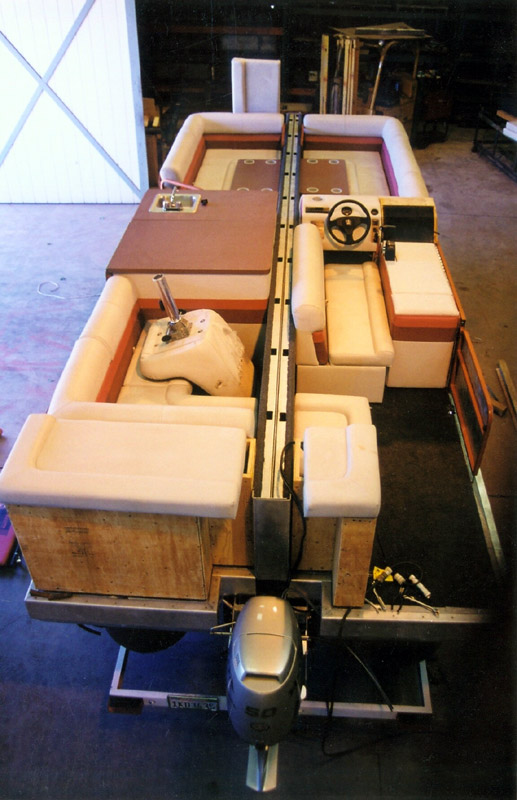 |
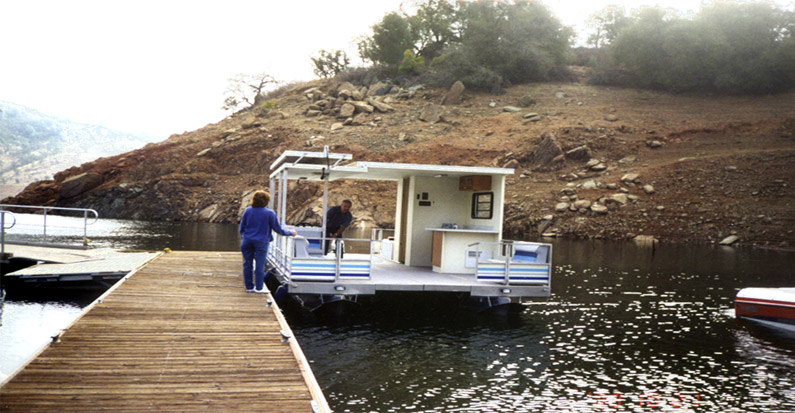 |
 |
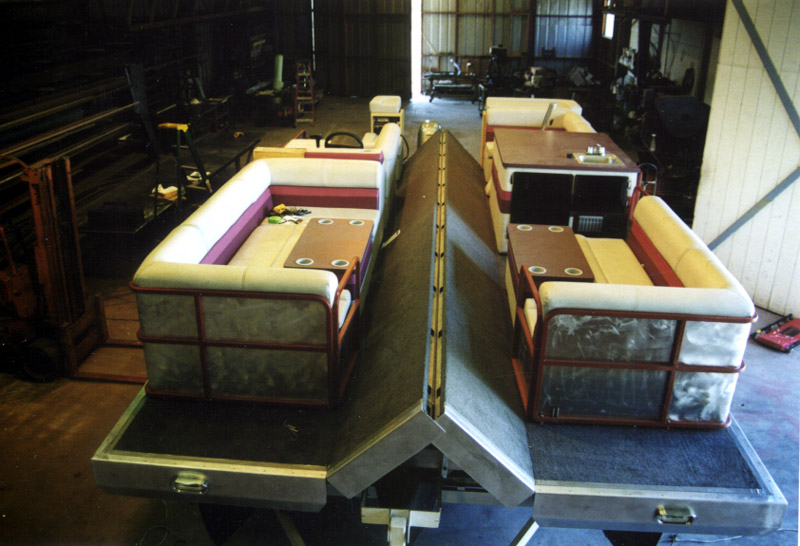 |
2004
Sniper Position Acquisition Device (S.P.A.D.™)
Using a patent pending integration of seven state of the art technologies, this device provides near real time detection
and acquisition of the position of single or multiple sniper locations, providing our snipers or mobile weapons systems with
the ability to eliminate enemy snipers with little or no collateral damage to property or innocent civilians. The S.P.A.D.
system will prove to be an increasingly valuable tool in urban warfare, occupation or liberation operations. The S.P.A.D. system
technology is currently being submitted for licensing. Jim worked with Lockheed Martin Advanced Project Lab in Palo Alto to act
as the weapons delivery contractor.
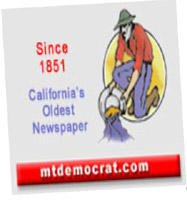 Newspaper article , JAN, 2004 Man Invents Sniper Finder
Newspaper article , JAN, 2004 Man Invents Sniper Finder
CAMERON PARK – Snipers beware: Jim Riordan knows where you are. The local man just invented a "sniper position acquisition
device," a defensive weapon designed to pinpoint the area from where a sniper shoots. Defense contractor Lockheed-Martin sent
it over to the U.S. Department of Defense, with an eye toward producing the piece of equipment if it gets the nod. "You want to
start with the biggest, or with the best," Riordan said of his marketing strategy. "Sometimes, the biggest is not necessarily the
best." Riordan started with one of the biggest defense contractors when marketing his device, just as he goes straight to the top
when selling the devices of others. An invention consultant of sorts, the Cameron Park man aids others in the design, production
and marketing of their inventions.
2005
Holdstar™
2005 saw the completion of development of the Holdstar Hip Pack, a useful replacement for bulky fanny packs and hip packs. The
Holdstar became available through retail outlets and could be ordered directly from Riordanco's website
|
|
|
|
2003 to 2008 Talking Trivia™
Click on the image below to view |
2004 to 2007
CDs depicting how to build custom vehicles.
We decided to build several project cars and then sell CDs on line to folks who would like to build their own hot rods. The idea was to show every step of the building process so that even folks who had never tackled a project like this could see first-hand how easy it was to do and then offer consulting services for those who had more questions. The first Project was a replica Bugatti and the second was a unique design of Jim and Lynn's.
2006
PUNCH 'N DRAIN™
The tool every painter needs
By James F. Riordan
This tool was invented by Jim Riordan for a client to aid Painters in preventing drips
from cans. After punching the rim, the paint drops right back into the can.
INSTRUCTIONS
 1.) Open can by gently prying up rim of can cover using the end of one handle (See figure 1)
while slowly working your way around the entire can until lid is easily removed. Remove the lid.
1.) Open can by gently prying up rim of can cover using the end of one handle (See figure 1)
while slowly working your way around the entire can until lid is easily removed. Remove the lid.
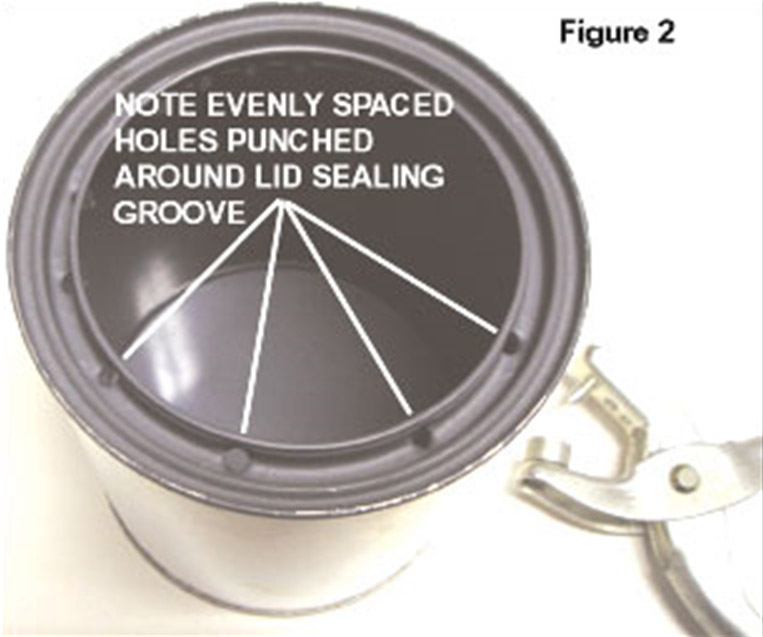 2.) Position punch so that the pointed
punch pin is on the top side of the can and is inside the groove that the lid fits into.
2.) Position punch so that the pointed
punch pin is on the top side of the can and is inside the groove that the lid fits into.
3.) Gently squeeze the handles together as shown (See figure 1) Use only as much squeezing pressure on the punch handles as is required to puncture the can. The Punch 'N Drain tool is very easy to use and requires only light pressure. With very thin paint or stain, you will not need as many holes.
4.) The bottom "die" of the tool automatically aligns the punch properly such that the punched holes are closer to the inside rim for a leakproof reseal of can (See figure 2).
2008
The Quik Kover
|
What it is:
A delightfully simple disk media cover solution that provides fast and easy one-handed access to all types of disk media while fully protecting the data side of the disk. Simply pick up the disk (please click "Play Quik-Kover Video button) with the Quik-Kover already installed by placing your thumb and middle finger in the "open" areas on the outside diameter of the Kover, as shown in the video, lift the disk and then "eject the Quik-Kover from the disk by pushing against the center of the Quik-Kover with your index finger. The Quik-Kover will drop away from the disk and onto your desktop, car seat or where ever you are using the disk. When you are ready to store the disk again, just snap the disk back onto the Quik-Kover for safe storage.
Advantages and benefits of the QuikKover:
· QuikKovers can be fitted to disks during production and disks can then be "nested" on top of each other. After "nesting", the stack of disks and covers becomes stabilized into a "tower" such that media and covers can be sold in one stack, together. 50 disks with QuikKovers installed approximately equal the height of a tower the size of 100 disks sold without Kovers. · Our unique patent pending packaging eliminates the need for a standard plastic "cover" and "base" typically used to sell CD/DVD "towers" thus saving the cost of the parts and reducing the plastic parts needed for standard towers of disks. QuikKovers eliminate the need to have to purchase separate "jewel cases". · QuikKovers eliminate the need to "fight with" cumbersome, poorly designed "jewel cases" when using or storing disks. Think for just a moment of how many times you have watched, or heard of, people breaking the jewel case cover, having the top of the case "pop off" the bottom and drop the disk on the floor potentially scratching the media or end up with a cut finger from a piece of shattered acrylic plastic? It is such a universal problem that a comedian recently performed a hysterically funny, entire routine based on trying to open a Jewel case without damaging himself or the disk. · Round QuikKovers take up less space than square jewel cases. · Graphics can be labeled, printed, or engraved on one or both sides of the QuikKover, providing advertising exposure each time a Kover is removed and during the time data is being written to a disk or when the disk content is being used. (High cost perexposure for advertising!) · Adding QuikKovers to disks is easily incorporated into the disk Mfg. process. Instead of placing the disk directly onto a plastic "tower", the disk would be snapped in place onto the QuikKover and then "picked and placed" onto a stack of "nested" disks, repeating the process until the number of desired disks per tower is reached. · Our patent pending "tower wrap" packaging means no additional plastic injection molded pieces are necessary. · One or more disks complete with QuikKovers, can be removed easily from our "tower wrap" of "nested" disks, leaving the rest of the "tower" intact for easy storage. · Raised outer and inner "rings" keep disk dataside slightly elevated from QuikKover for increased protection of data side.
· QuikKovers provide an easy, safe, light and non bulky protection for mailing of Disk media.
· Mass duplicators can easily speed the duplication process by loading disk data, snapping disks into QuikKovers and then labeling or printing the disks after installation of the QuikKover, avoiding entirely the process of having to open and reclose a "jewel case" The disk/Kover assembly can then be slipped into a preprinted cardboard sleeve for mailing/distribution.
2009
HUBDOCK™
In 2009 we completed the development from concept to two full size working prototypes and a table-top demonstrator for trade shows for a client.
This was a very complex project including preparation of all working drawings, fabricating all parts from our drawings and then component
assembly, final assembly and delivery. The concept was a novel device which allowed a rear wheel of a bicycle to be easily removed for tire
changing or patching, without the greasy removal of the derailleur gears and the chain, all of which remained on the bike during the tire removal
and reinstallation.
|
What our client said:
The show demonstrator model and the working Bicycles came out excellent. The finish and quality of the parts was everything we expected and more. We are now on our way to show the models at one of the largest bicycle expositions on the West Coast. Thanks for all your great work.
HUBDOCK
2009
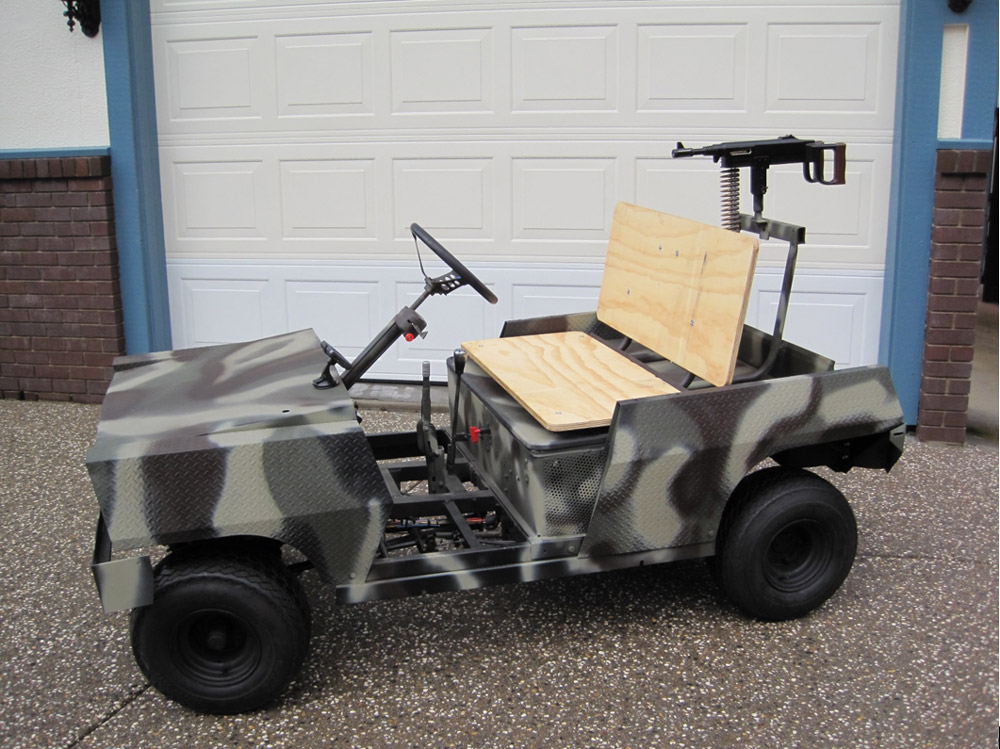 |
| Another product designed for submission to DARPA. This unique vehicle was designed to sniff out and destroy roadside EIDs. |
Many of the products we are presently working on are defense related and therefore not available for viewing. We have submitted projects to DARPA and are presently working on several projects geared toward submission to DARPA (the DEFENSE ADVANCED RESEARCH PROJECTS AGENCY) in Virginia. We love our Country and we love DARPA. GOD BLESS AMERICA.
One of the projects we submitted for consideration was the S.P.A.D sniper finder (discussed earlier), and the remote control, GPS guided IED (improvised explosive Device) locator vehicle, (also shown earlier) which would function with Humanoid like figures complete with infrared heat sources. The vehicle is designed to locate and cause remote activation of IEDs thus preventing them from being used on our live troops.
2006 to present
The Sprinter™ Turbo Resonator Eliminator
NOTE: Available on our website Our Products Catalog
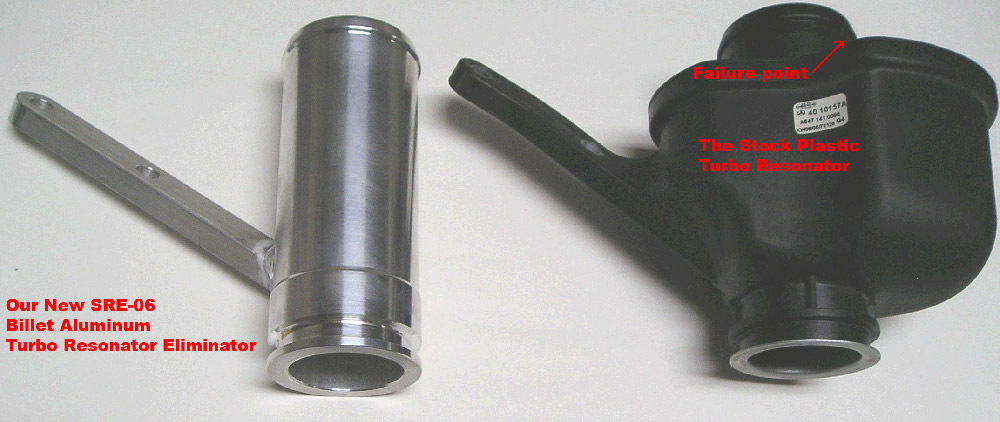 |
| Sprinter Resonators — New and Old |
In 2006, at the request of a local Dodge™ dealer and Mercedes repair facility, we engineered, developed, tested and marketed this device which replaces a stock part on the 2.7 liter Mercedes Benz™ turbo diesel engine that had been causing, in some cases, multiple failures on the same Sprinter vans within only a few thousand miles of each other. When the turbo resonator fails, the vehicle usually ends up being out of service and having to be towed to the nearest Dodge dealer for repair, interrupting vacations for RVers and workdays for contractors and delivery services. Our Eliminator has been in service for thousands of trouble free miles with no failures. Our company engineers, designs and manufactures "overnight" solutions such as this for many different industries.
2007 to present
The Sprinter™ Turbo Hose Adapter for Cracked Hoses
By James F. Riordan
NOTE: Available on our website Our Products Catalog
ADAP-06 – 2002 through early 2007, 2.7 liter 5 Cyl. Inline engine
We consider it an honor that once again Dodge dealers have asked us for a fix. This time, it is for the 2002 to 2007 2.7 liter , 5 cylinder in-line engines intercooler to intake manifold hoses which are cracking and then blowing out at the end of this hose, causing the engines to go into "limp home mode." This hose has a metal fitting "formed" onto the hose where it enters the intake manifold on the top of the driver's side of the engine , (See photo below) which is failing causing cracks to form at the fitting (See photo below). At first, the tiny crack may cause an "occasional" limp home mode problem and then seemingly return to normal. Soon, however, this tiny crack "blows out" and becomes a big crack, putting the engine in limp home mode and ruining your workday or vacation schedule. Now you can eliminate this problem before it starts (no need to wait until the hose fails) with our ADAP-06 which solves the end cracking problems once and for all. (See Photo below) The ADAP-06 typically costs less than replacing the hose, since this hose is sold in a 3 part assembly (please see our Installation PDF below ) The ADAP-06 is being installed by many Dodge dealers and does not affect your warranty.
|
|
|
2008 to present
ADAP-09 – late 2007 through present, 3 liter V6 Turbo diesel engine
NOTE: Available on our website Our Products Catalog
We learned from a fleet Dodge dealer about a similar metal hose end failure on the 2007 and up 3 liter V6 and they asked us for a fix. The turbo-to-intercooler hoses AND the intercooler to intake hoses are BOTH cracking and then blowing out at the ends of the hoses, causing the engines to go into "limp home mode." These hoses have a metal fitting "formed" onto the hoses, (See photo 1 below) which are continually failing causing cracks to form at the fitting (See photo 2 below). At first, the tiny crack may cause an "occasional" limp home mode problem and then seemingly return to normal. Soon, however, these tiny cracks "blow out" and become big cracks, putting the engine in limp home mode and ruining your workday or vacation schedule. The most common hose to crack is the drivers' side intercooler-to-intake hose however both hoses are experiencing this failure. Now you can eliminate this problem before it starts (no need to wait until the hose fails) with our ADAP-09 which fits either hose end and solves the end cracking problems once and for all. (See Photo 3 below) Two ADAP-09s cost little more than replacing one blown out hose. (one hose assembly with the metal end can cost $130-$140 or more), and based on our input from Dodge dealership Sprinter techs, we are recommending replacing both of these metal hose ends at the same time on your 2007 to current V6 Sprinter to avoid future problems on the road. We have just introduced our new high pressure clamp which is wider, stronger and has internal shielding to prevent any hose damage. The ADAP-09s do not affect your warranty.
|
|
|
We are providers of alternative design solutions and therefore always open to designing, and in some cases, manufacturing and supplying, "fixes" for any type of vehicle. If you come across a poorly designed or failing part, we will be happy to look at it and if we choose to manufacture it, we will give you the first one FREE.
2010-2012
We have worked on and continue to develop special purpose airborne spying devices, again for planned submission to DARPA upon completion of testing.
During this time,we also designed, developed and built the prototype of the Kindergarde™ device in association with a Florida Inventor, John Shields, which reminds Mothers not to leave children in unattended vehicles on hot summer days . The device works flawlessly and we are still looking for an appropriate manufacturer.
